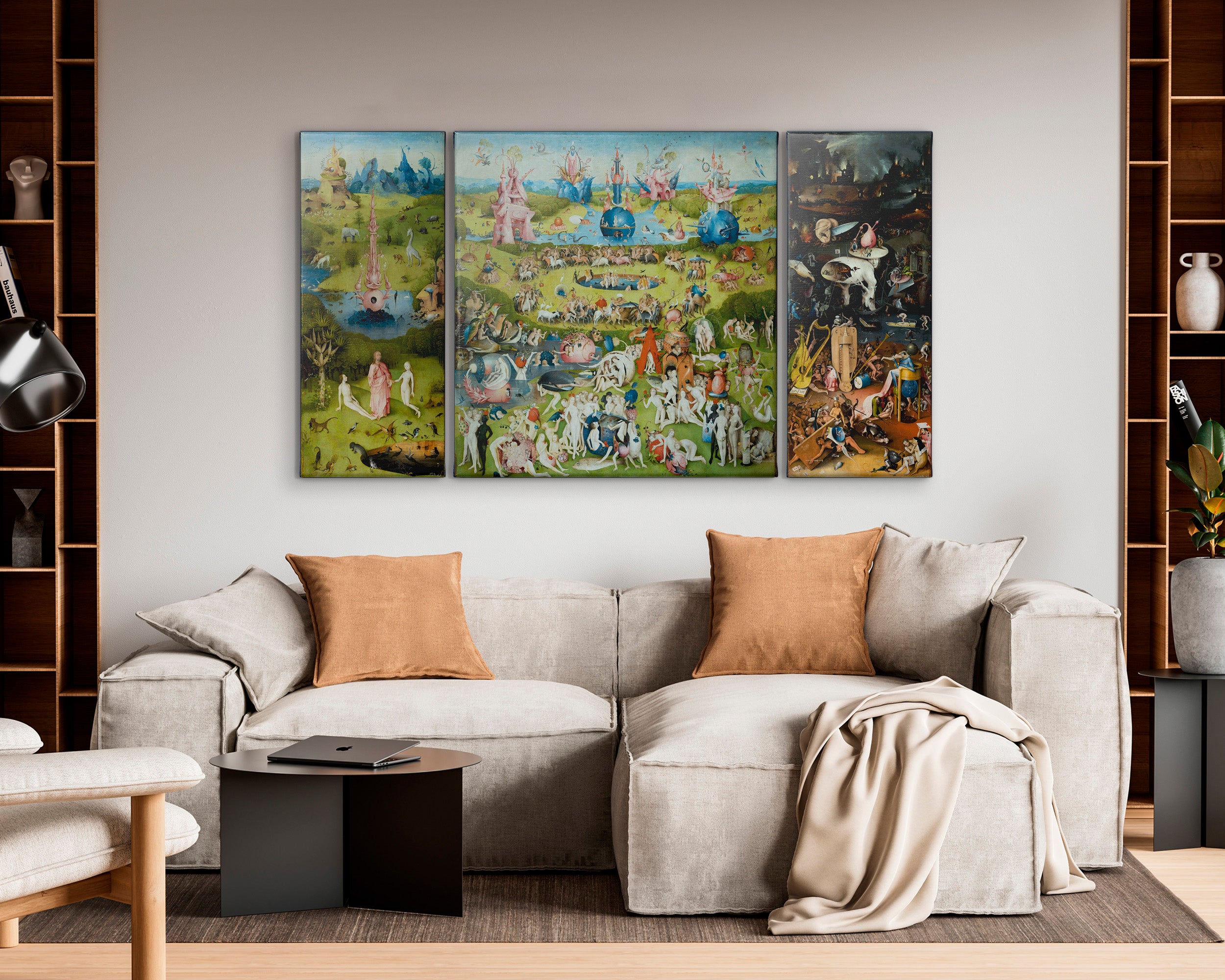-
Red Fuji ☶ Hokusai ☰ Art Print

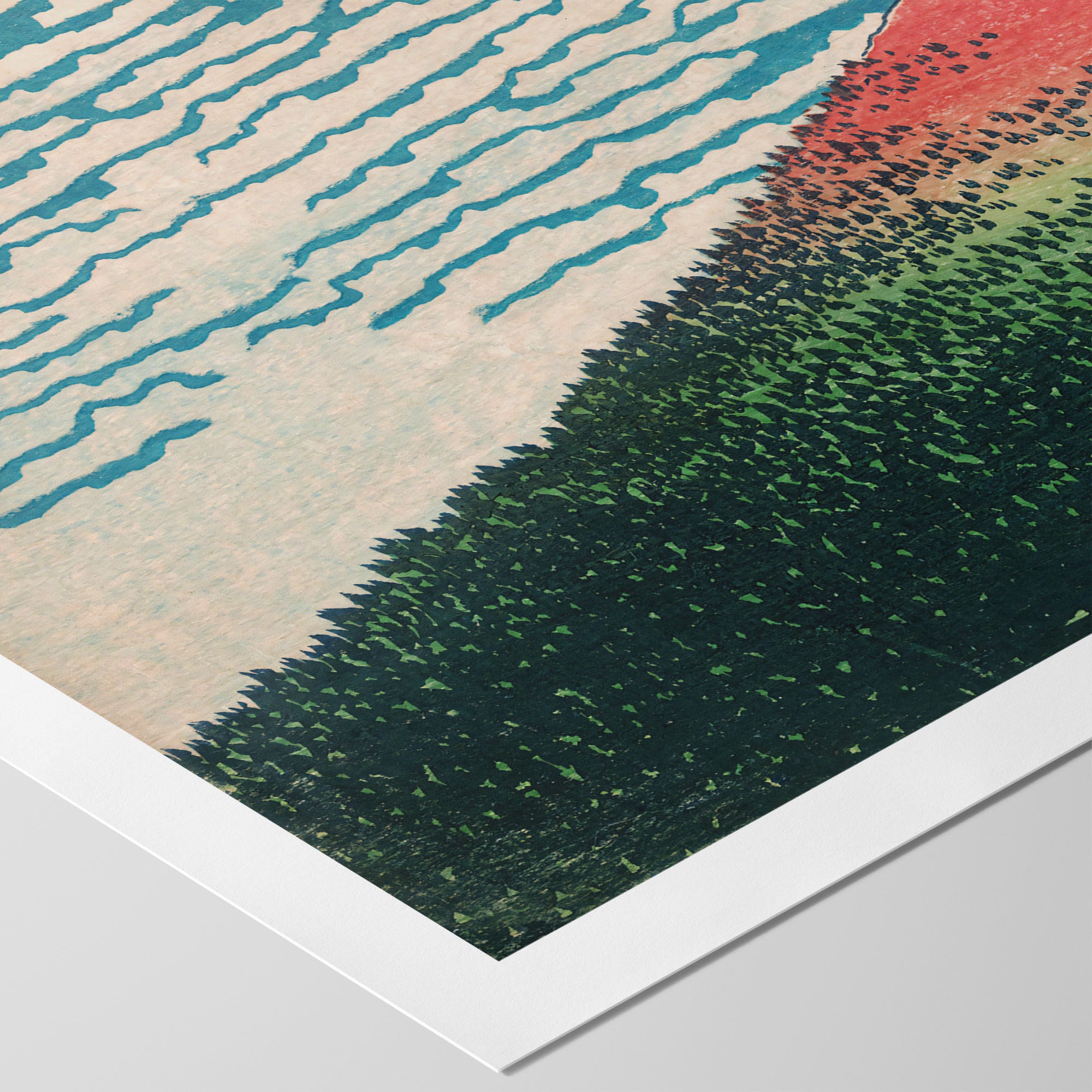 Red Fuji (1832) by Katsushika Hokusai, officially titled Fine Wind, Clear Morning (凱風快晴, Gaifū Kaisei), is a Japanese ukiyo-e woodblock print from Hokusai's series Thirty-six Views of Mount Fuji. This print prominently depicts a snow-capped Mount Fuji surrounded by trees and clouds, ➵
Red Fuji (1832) by Katsushika Hokusai, officially titled Fine Wind, Clear Morning (凱風快晴, Gaifū Kaisei), is a Japanese ukiyo-e woodblock print from Hokusai's series Thirty-six Views of Mount Fuji. This print prominently depicts a snow-capped Mount Fuji surrounded by trees and clouds, ➵◰ Canvas Reproductions
⧈ Framed Art Prints -
Red Fuji ☶ Hokusai ☰ Canvas
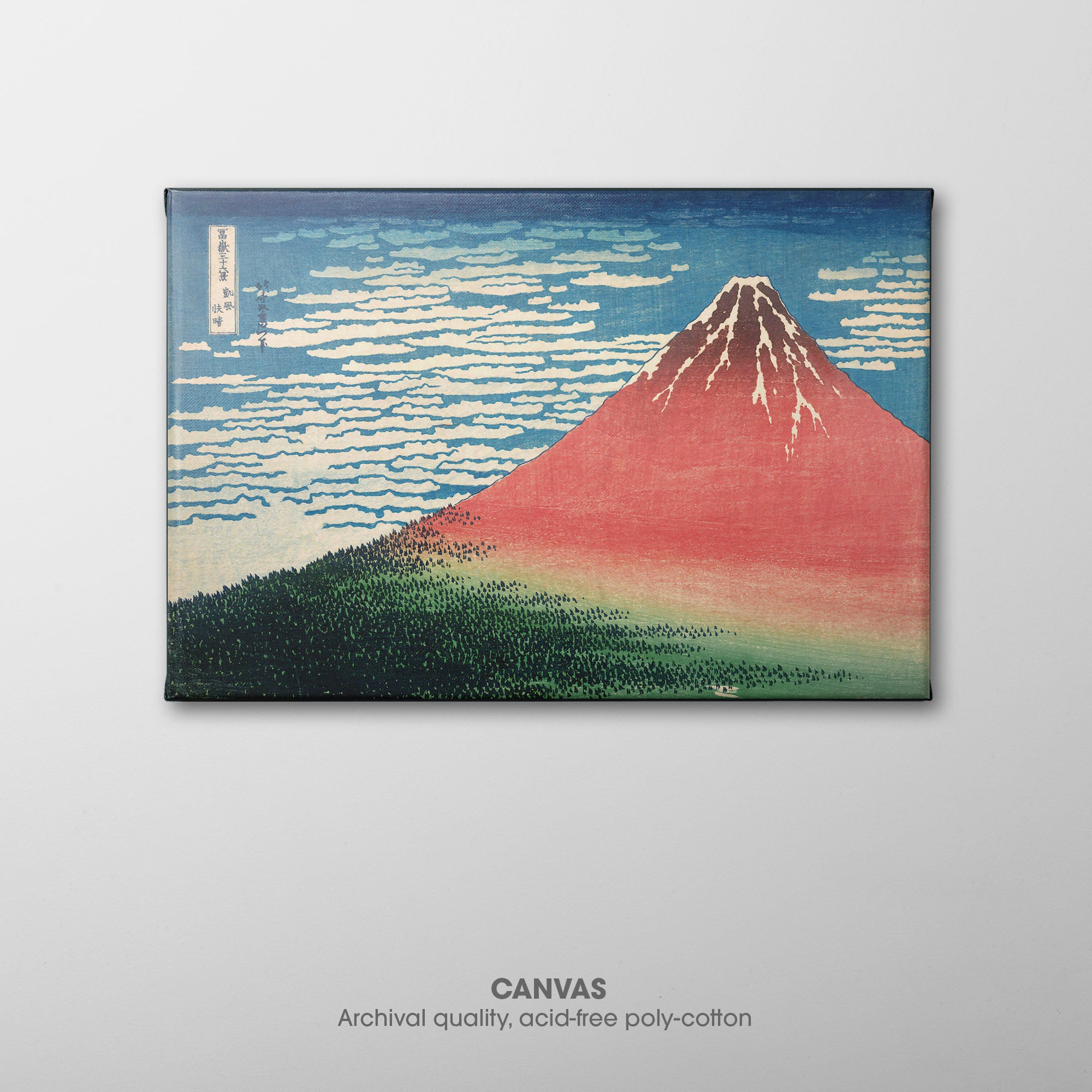
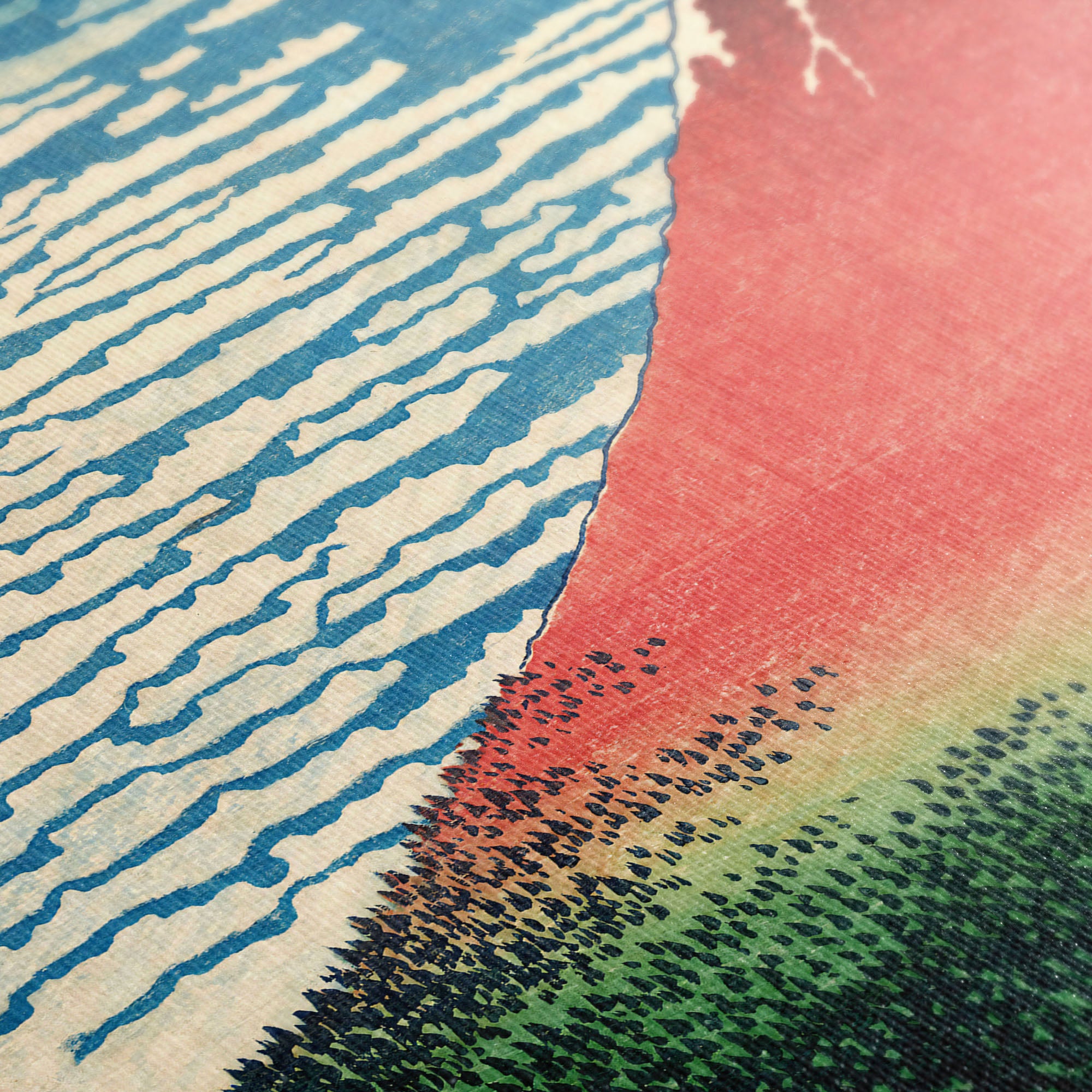 Red Fuji (1832) by Katsushika Hokusai, officially titled Fine Wind, Clear Morning (凱風快晴, Gaifū Kaisei), is a Japanese ukiyo-e woodblock print from Hokusai's series Thirty-six Views of Mount Fuji. This print prominently depicts a snow-capped Mount Fuji surrounded by trees and clouds, ➵
Red Fuji (1832) by Katsushika Hokusai, officially titled Fine Wind, Clear Morning (凱風快晴, Gaifū Kaisei), is a Japanese ukiyo-e woodblock print from Hokusai's series Thirty-six Views of Mount Fuji. This print prominently depicts a snow-capped Mount Fuji surrounded by trees and clouds, ➵◰ Canvas Reproductions
⧈ Framed Art Prints -
Redheaded Girl in Evening Dress ☲ Modigliani ☳ Art Print
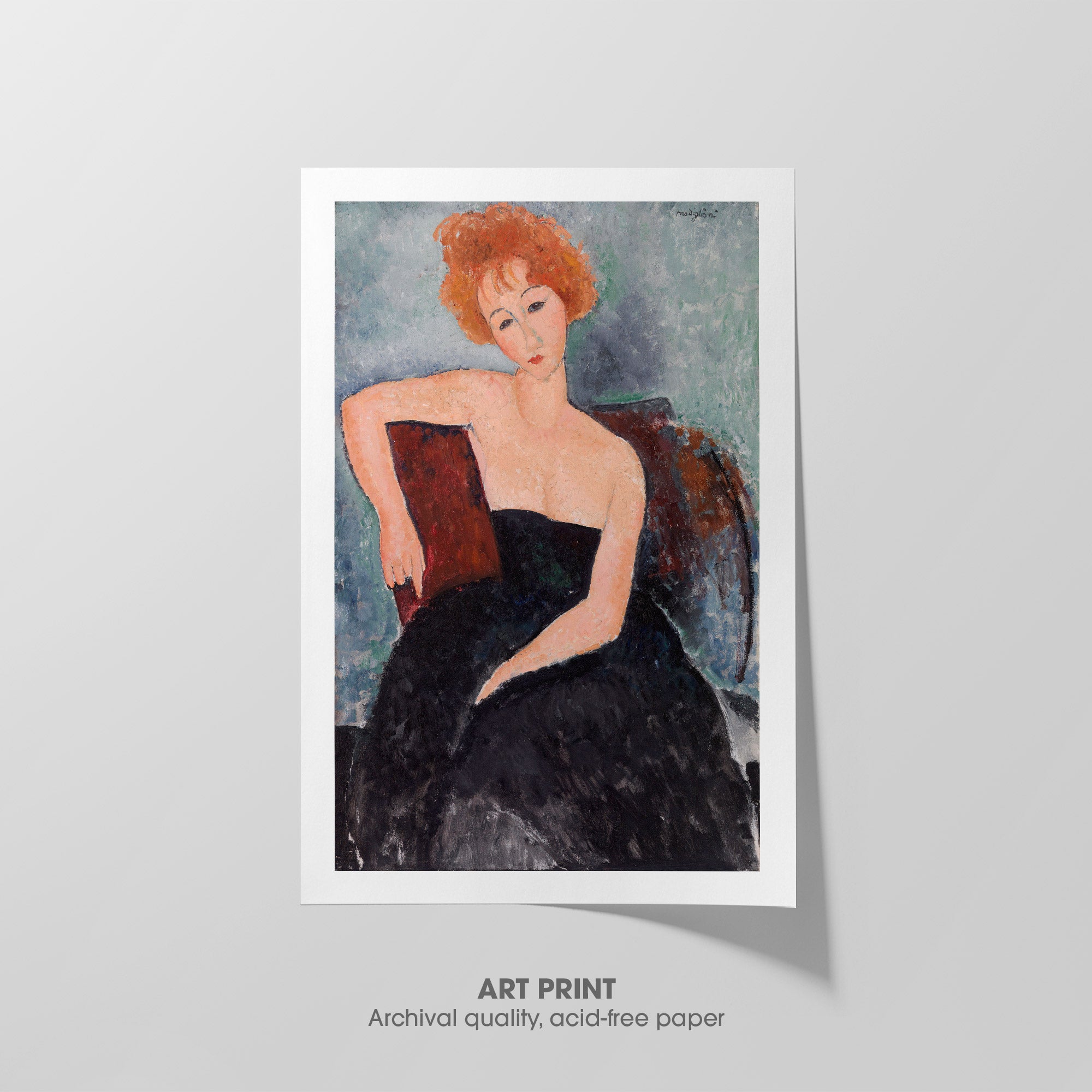
 Redheaded Girl in Evening Dress (1918) by Amadeo Modigliani depicts a young woman in a strapless dress, representative of bold new fashions that emerged as women experienced new freedom in the early 20th century. Draping her shoulder over the chair, she addresses ➵
Redheaded Girl in Evening Dress (1918) by Amadeo Modigliani depicts a young woman in a strapless dress, representative of bold new fashions that emerged as women experienced new freedom in the early 20th century. Draping her shoulder over the chair, she addresses ➵◰ Canvas Reproductions
⧈ Framed Art Prints -
Redheaded Girl in Evening Dress ☲ Modigliani ☳ Canvas
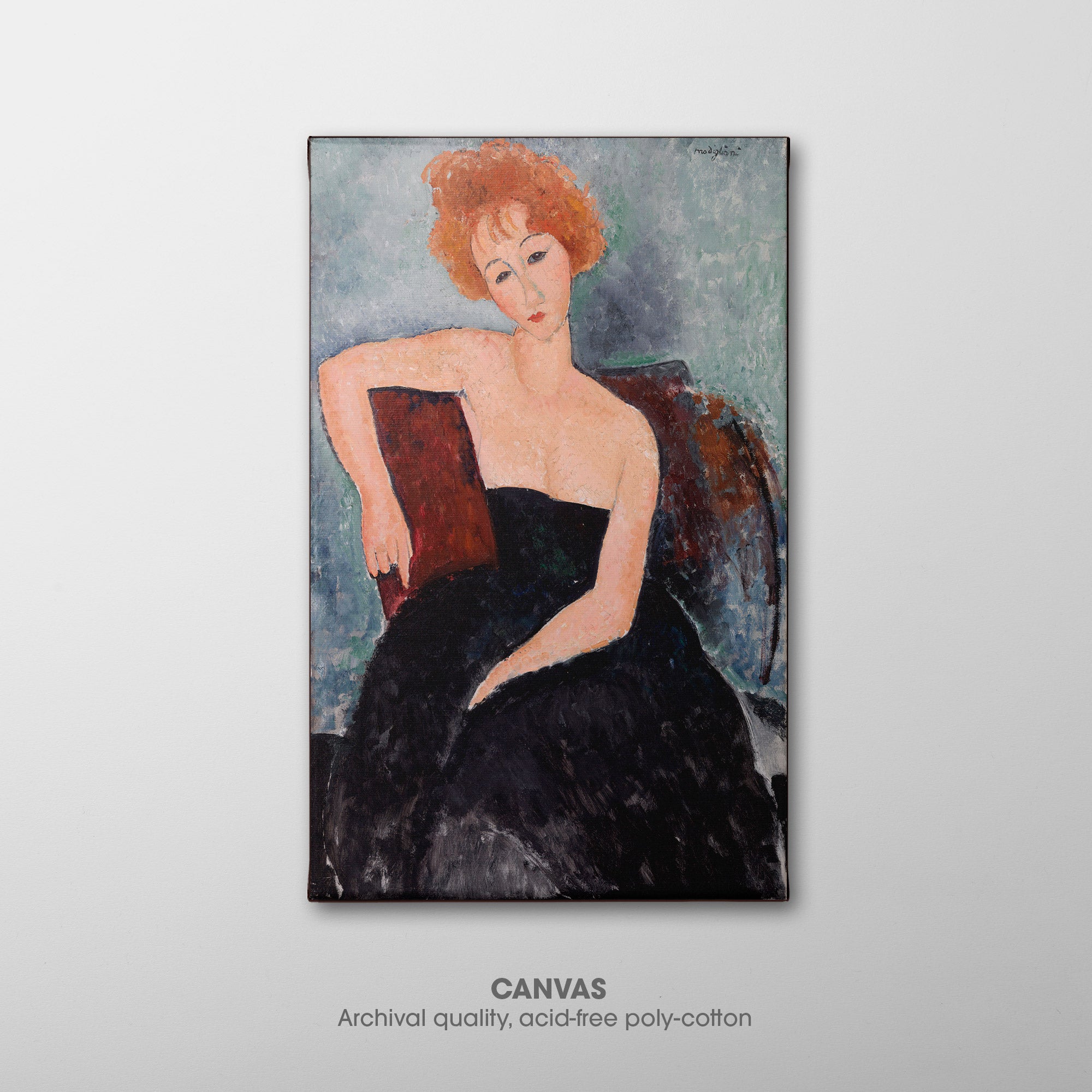
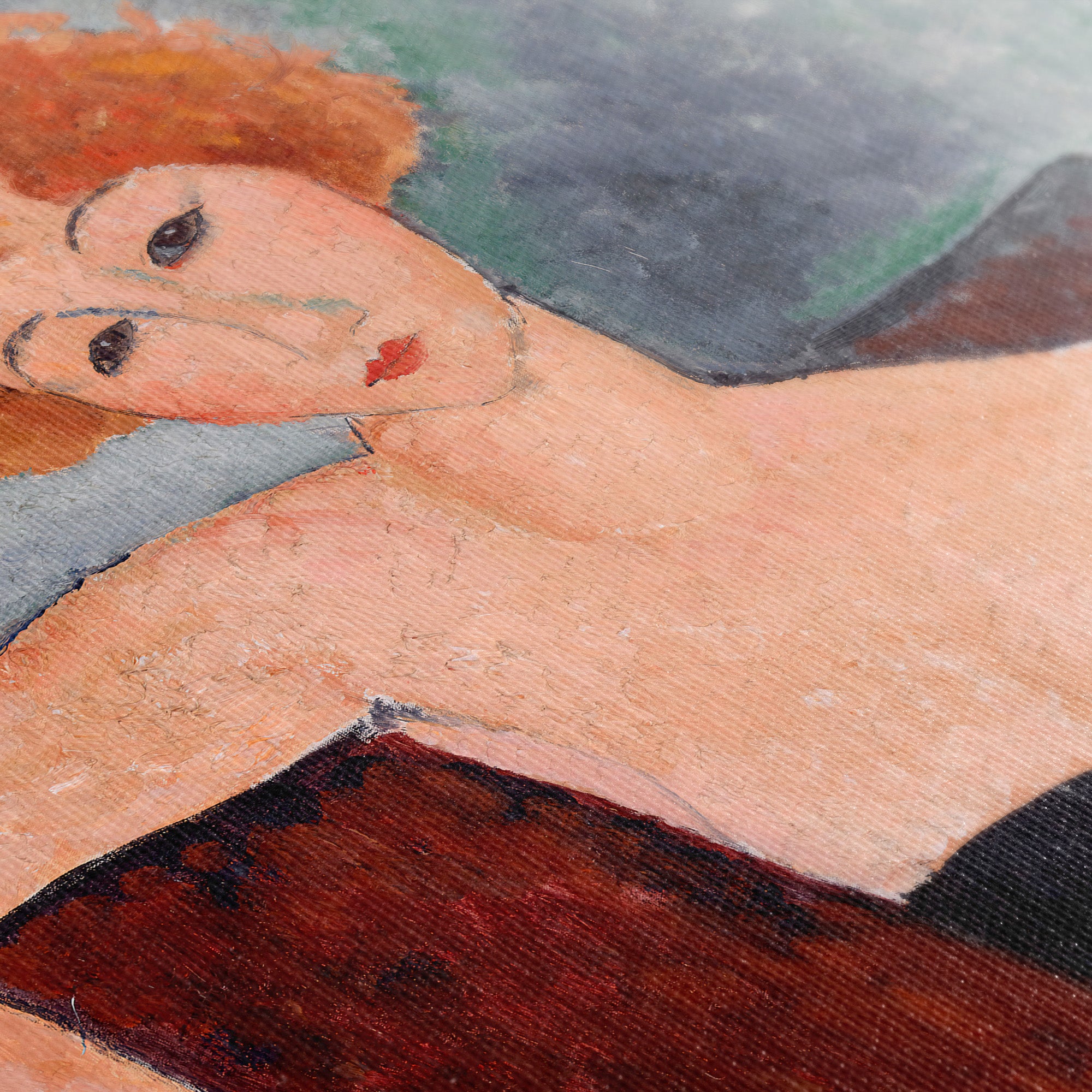 Redheaded Girl in Evening Dress (1918) by Amadeo Modigliani depicts a young woman in a strapless dress, representative of bold new fashions that emerged as women experienced new freedom in the early 20th century. Draping her shoulder over the chair, she addresses ➵
Redheaded Girl in Evening Dress (1918) by Amadeo Modigliani depicts a young woman in a strapless dress, representative of bold new fashions that emerged as women experienced new freedom in the early 20th century. Draping her shoulder over the chair, she addresses ➵◰ Canvas Reproductions
⧈ Framed Art Prints -
Salvator Mundi ☷ Da Vinci ☰ Art Print

 Salvator Mundi (1510) by Leonardo da Vinci, is Latin for "Savior of the World." Thought to be a copy of a lost original veiled with overpainting, it was rediscovered, restored, and included in an exhibition of Leonardo's work at the National Gallery, ➵
Salvator Mundi (1510) by Leonardo da Vinci, is Latin for "Savior of the World." Thought to be a copy of a lost original veiled with overpainting, it was rediscovered, restored, and included in an exhibition of Leonardo's work at the National Gallery, ➵◰ Canvas Reproductions
⧈ Framed Art Prints -
Salvator Mundi ☷ Da Vinci ☰ Canvas

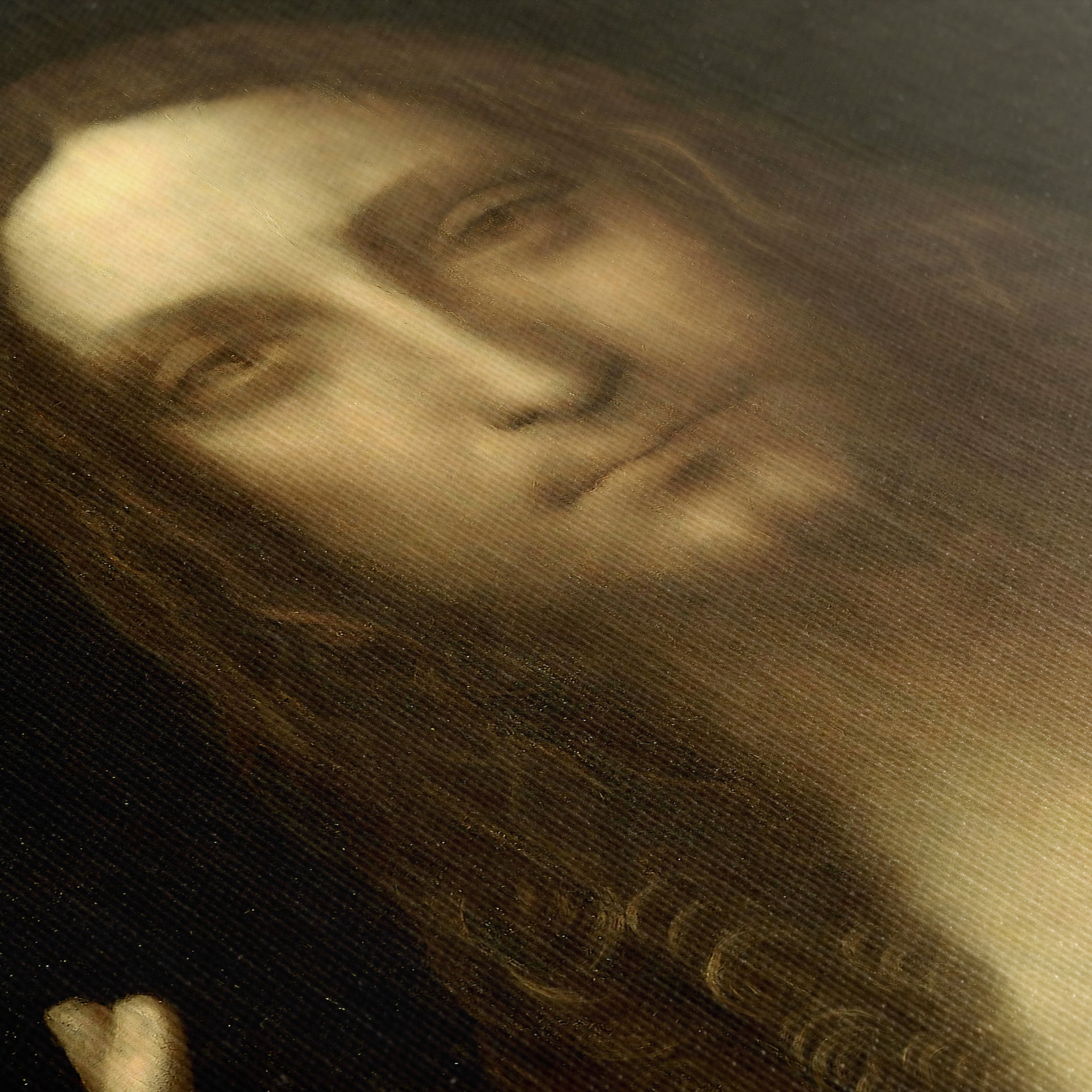 Salvator Mundi (1510) by Leonardo da Vinci, is Latin for "Savior of the World." Thought to be a copy of a lost original veiled with overpainting, it was rediscovered, restored, and included in an exhibition of Leonardo's work at the National Gallery, ➵
Salvator Mundi (1510) by Leonardo da Vinci, is Latin for "Savior of the World." Thought to be a copy of a lost original veiled with overpainting, it was rediscovered, restored, and included in an exhibition of Leonardo's work at the National Gallery, ➵◰ Canvas Reproductions
⧈ Framed Art Prints -
Sea of Ice ☵ Friedrich ☵ Art Print
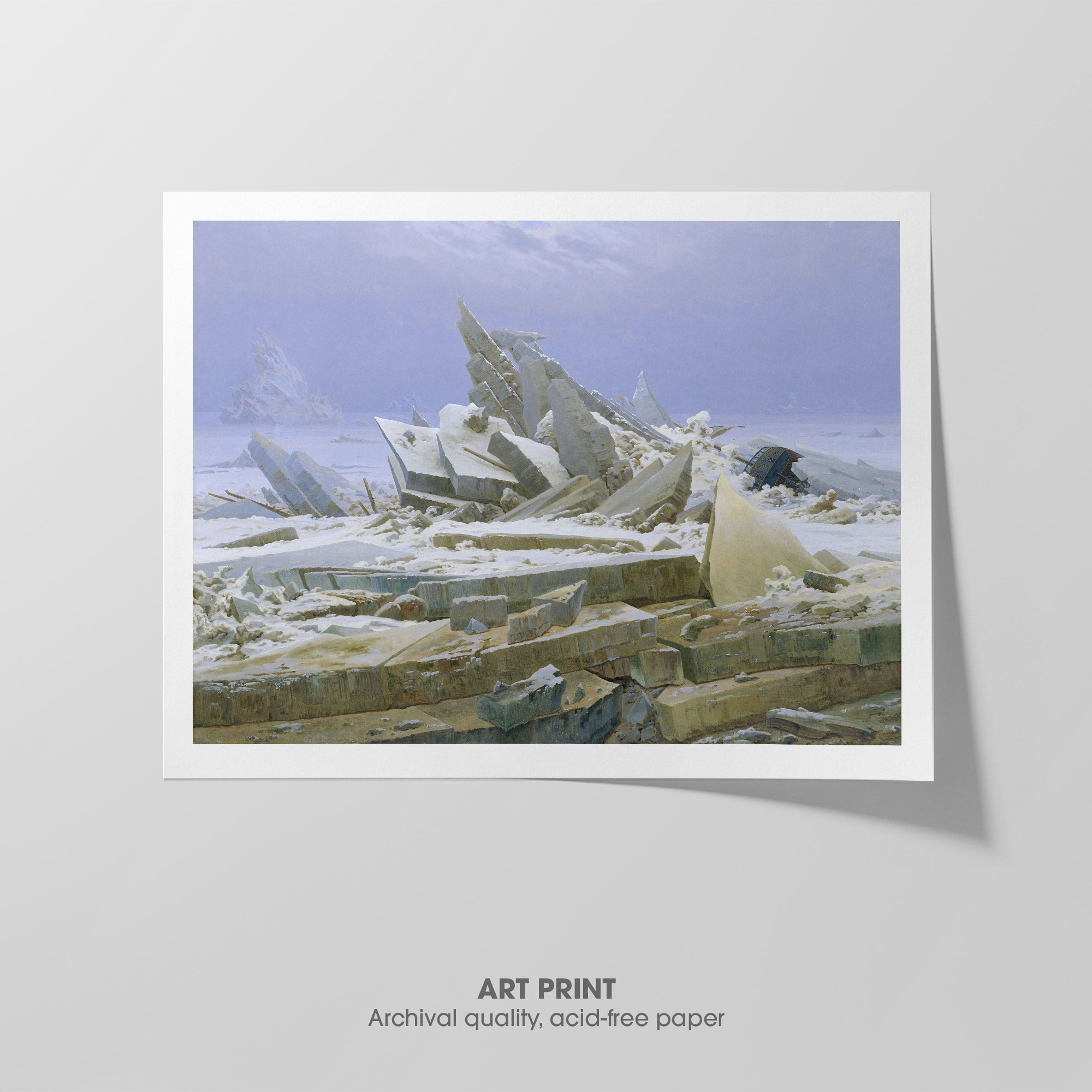
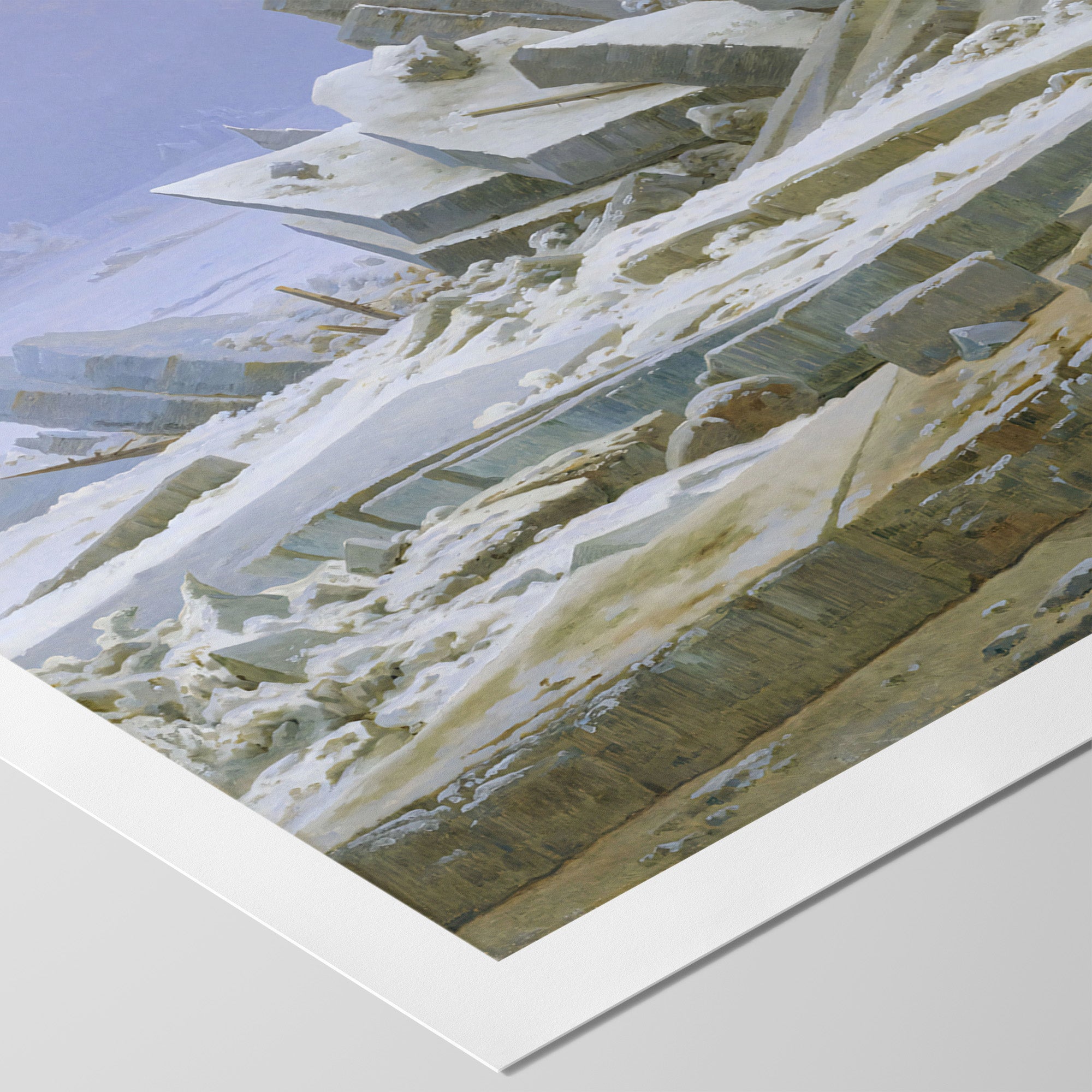 The Sea of Ice (1824, Das Eismeer) by Caspar David Friedrich depicts a vast Arctic ice floe, formed from layers of crushed ice. Although Friedrich never traveled to the Arctic, he conducted extensive studies of ice on the River Elbe near Dresden ➵
The Sea of Ice (1824, Das Eismeer) by Caspar David Friedrich depicts a vast Arctic ice floe, formed from layers of crushed ice. Although Friedrich never traveled to the Arctic, he conducted extensive studies of ice on the River Elbe near Dresden ➵◰ Canvas Reproductions
⧈ Framed Art Prints -
Sea of Ice ☵ Friedrich ☵ Canvas

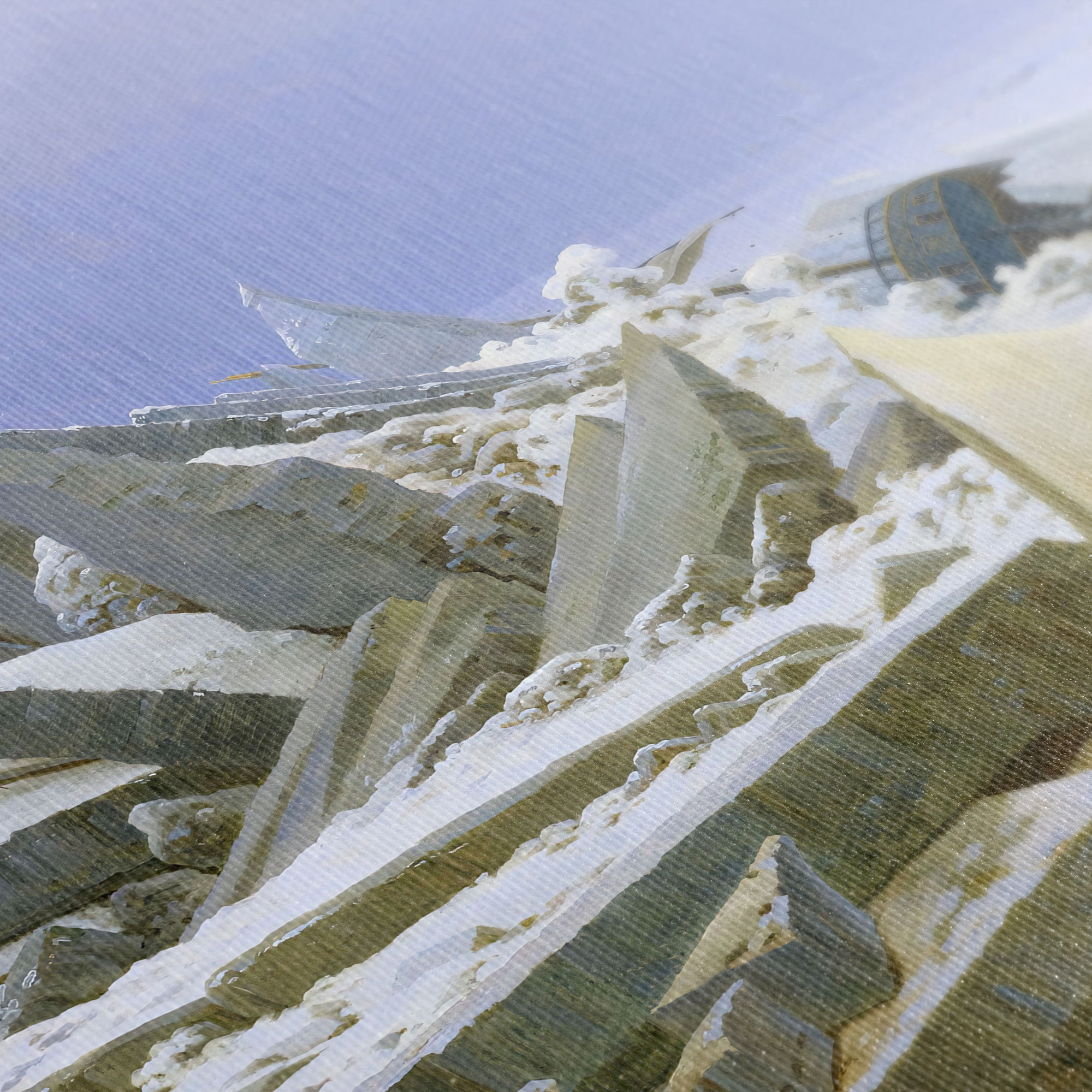 The Sea of Ice (1824, Das Eismeer) by Caspar David Friedrich depicts a vast Arctic ice floe, formed from layers of crushed ice. Although Friedrich never traveled to the Arctic, he conducted extensive studies of ice on the River Elbe near Dresden ➵
The Sea of Ice (1824, Das Eismeer) by Caspar David Friedrich depicts a vast Arctic ice floe, formed from layers of crushed ice. Although Friedrich never traveled to the Arctic, he conducted extensive studies of ice on the River Elbe near Dresden ➵◰ Canvas Reproductions
⧈ Framed Art Prints -
Self-Portrait (Blue) ☶ Van Gogh ☴ Art Print

 Self-Portrait (1889) by Vincent van Gogh is possibly his last self-portrait, painted shortly before he left Saint-Rémy-de-Provence in southern France. One of about 32 produced over a 10 year period, these portraits were an important part of his work as a painter ➵
Self-Portrait (1889) by Vincent van Gogh is possibly his last self-portrait, painted shortly before he left Saint-Rémy-de-Provence in southern France. One of about 32 produced over a 10 year period, these portraits were an important part of his work as a painter ➵◰ Canvas Reproductions
⧈ Framed Art Prints -
Self-Portrait (Blue) ☶ Van Gogh ☴ Canvas

 Self-Portrait (1889) by Vincent van Gogh is possibly his last self-portrait, painted shortly before he left Saint-Rémy-de-Provence in southern France. One of about 32 produced over a 10 year period, these portraits were an important part of his work as a painter ➵
Self-Portrait (1889) by Vincent van Gogh is possibly his last self-portrait, painted shortly before he left Saint-Rémy-de-Provence in southern France. One of about 32 produced over a 10 year period, these portraits were an important part of his work as a painter ➵◰ Canvas Reproductions
⧈ Framed Art Prints -
Self-Portrait (Green) ☴ Van Gogh ☶ Art Print

 Self-Portrait (1887) by Vincent van Gogh is one of about 32 produced over a 10 year period, an important part of his work as he often lacked the money to pay models. He painted his first known self-portrait in 1886, following the ➵
Self-Portrait (1887) by Vincent van Gogh is one of about 32 produced over a 10 year period, an important part of his work as he often lacked the money to pay models. He painted his first known self-portrait in 1886, following the ➵◰ Canvas Reproductions
⧈ Framed Art Prints -
Self-Portrait (Green) ☴ Van Gogh ☶ Canvas

 Self-Portrait (1887) by Vincent van Gogh is one of about 32 produced over a 10 year period, an important part of his work as he often lacked the money to pay models. He painted his first known self-portrait in 1886, following the ➵
Self-Portrait (1887) by Vincent van Gogh is one of about 32 produced over a 10 year period, an important part of his work as he often lacked the money to pay models. He painted his first known self-portrait in 1886, following the ➵◰ Canvas Reproductions
⧈ Framed Art Prints -
Self-Portrait with Bandaged Ear ☳ Van Gogh ☵ Art Print

 Self-Portrait with Bandaged Ear (1889) by Vincent van Gogh is a self-portrait in a blue cap with black fur, a green overcoat, with a bandage covering his ear. The portrait makes it appear his right ear is bandaged, as he used a ➵
Self-Portrait with Bandaged Ear (1889) by Vincent van Gogh is a self-portrait in a blue cap with black fur, a green overcoat, with a bandage covering his ear. The portrait makes it appear his right ear is bandaged, as he used a ➵◰ Canvas Reproductions
⧈ Framed Art Prints -
Self-Portrait with Bandaged Ear ☳ Van Gogh ☵ Canvas

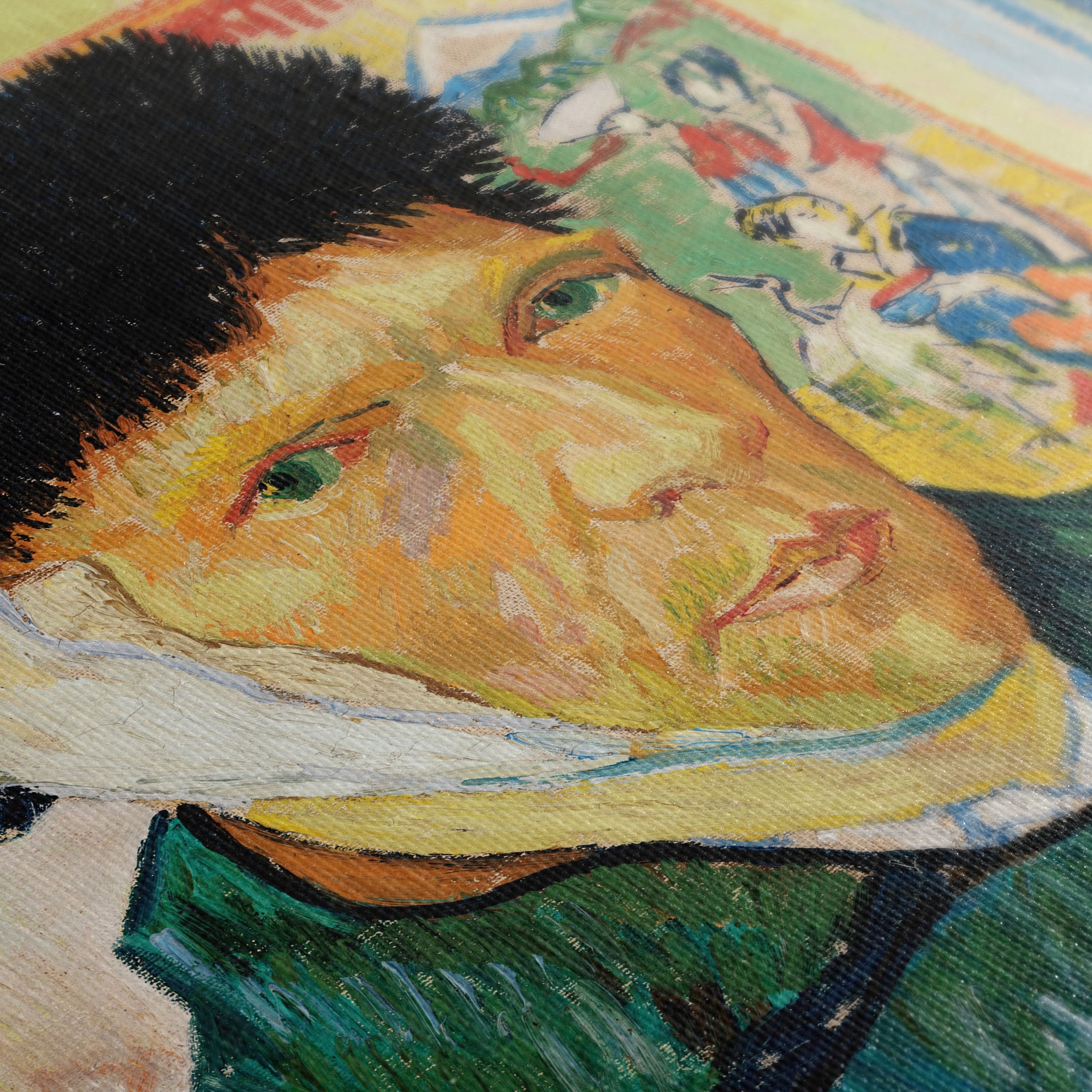 Self-Portrait with Bandaged Ear (1889) by Vincent van Gogh is a self-portrait in a blue cap with black fur, a green overcoat, with a bandage covering his ear. The portrait makes it appear his right ear is bandaged, as he used a ➵
Self-Portrait with Bandaged Ear (1889) by Vincent van Gogh is a self-portrait in a blue cap with black fur, a green overcoat, with a bandage covering his ear. The portrait makes it appear his right ear is bandaged, as he used a ➵◰ Canvas Reproductions
⧈ Framed Art Prints -
Self-Portrait with Beret ☴ Rembrandt ☷ Art Print
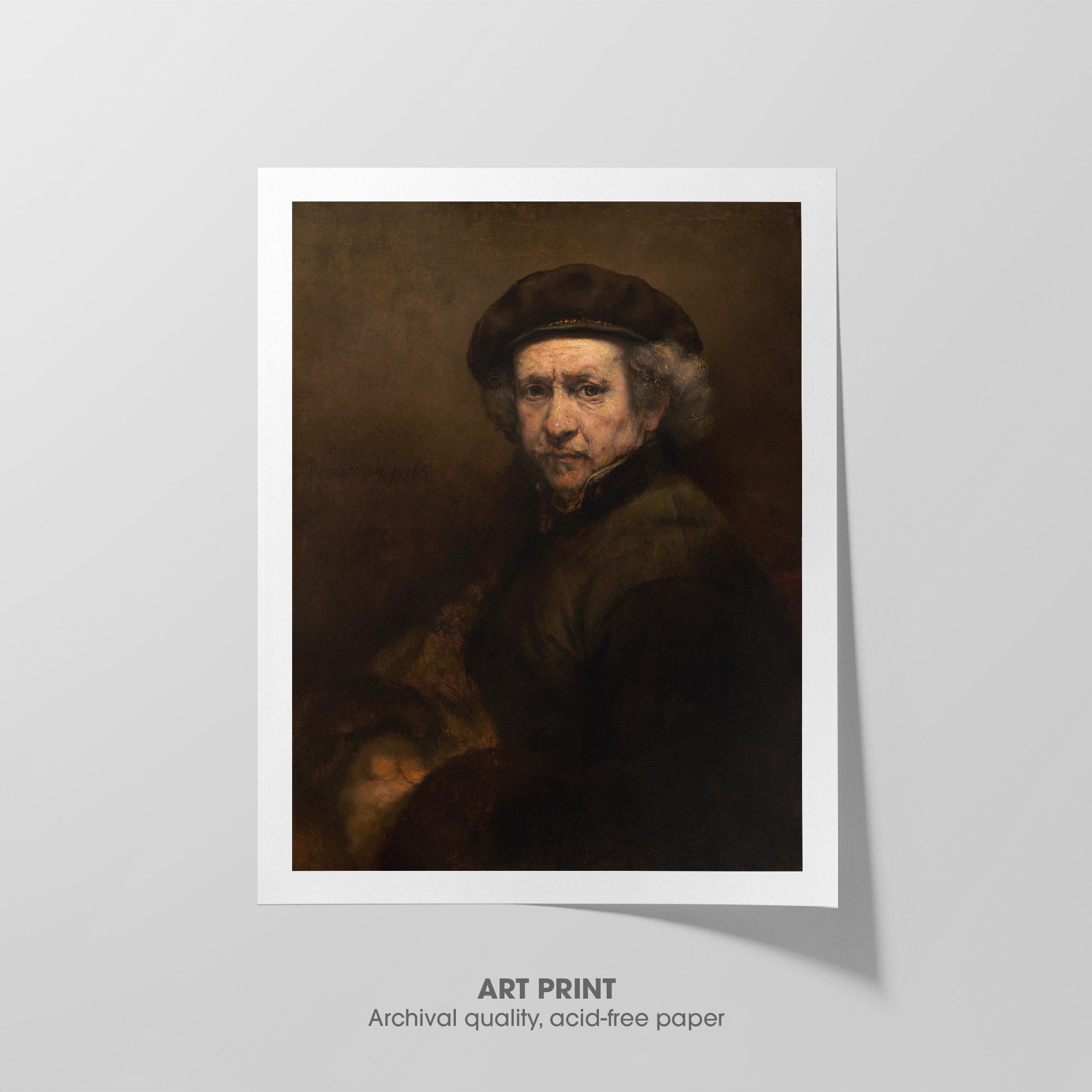
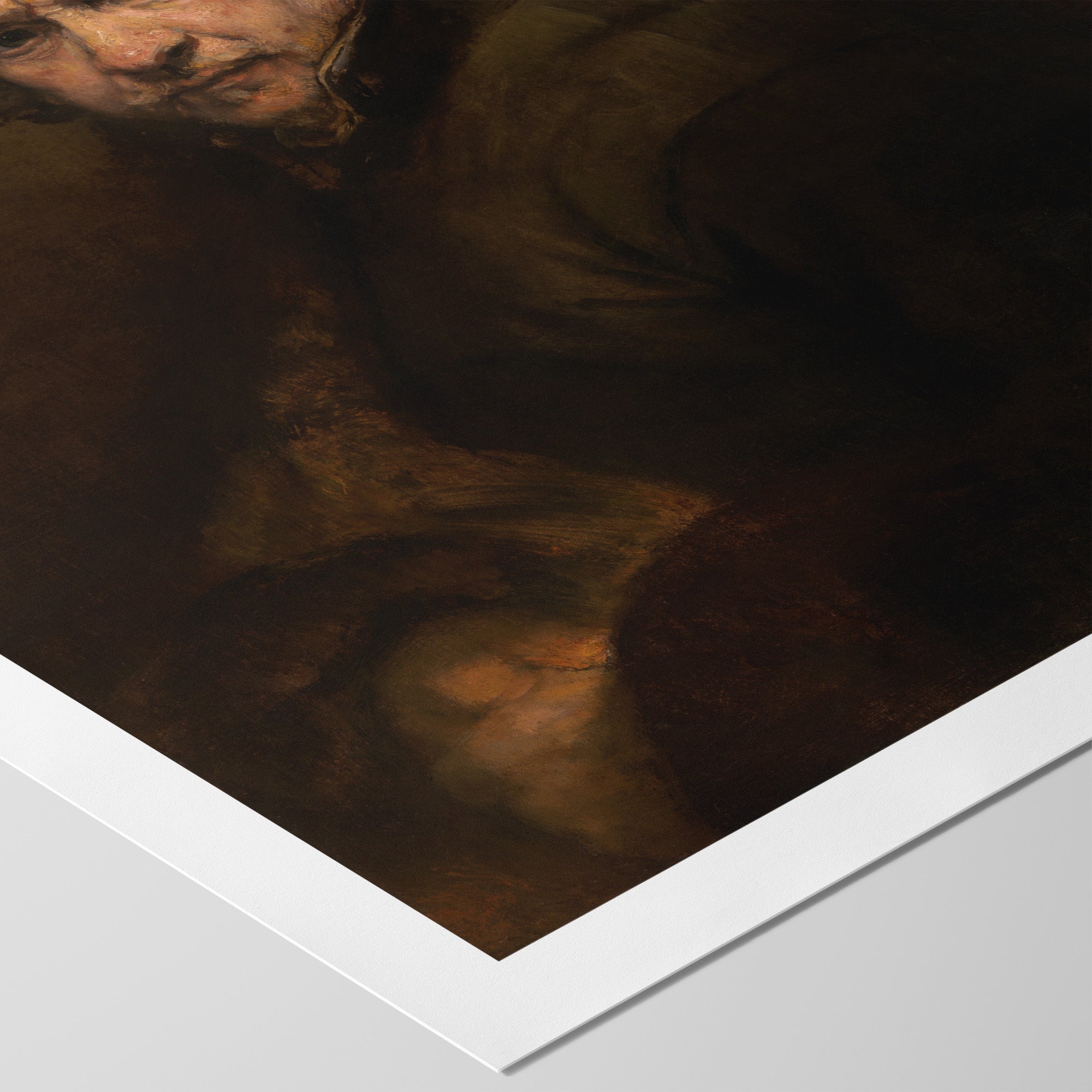 Self-Portrait with Beret and Turned-Up Collar (1659) by Rembrandt van Rijn is one of over 40 self-portraits he created. Rembrandt is seated, wearing a fur cloak, his hands clasped in his lap. His face is well lit with detailed brushwork, while his ➵
Self-Portrait with Beret and Turned-Up Collar (1659) by Rembrandt van Rijn is one of over 40 self-portraits he created. Rembrandt is seated, wearing a fur cloak, his hands clasped in his lap. His face is well lit with detailed brushwork, while his ➵◰ Canvas Reproductions
⧈ Framed Art Prints -
Self-Portrait with Beret ☴ Rembrandt ☷ Canvas
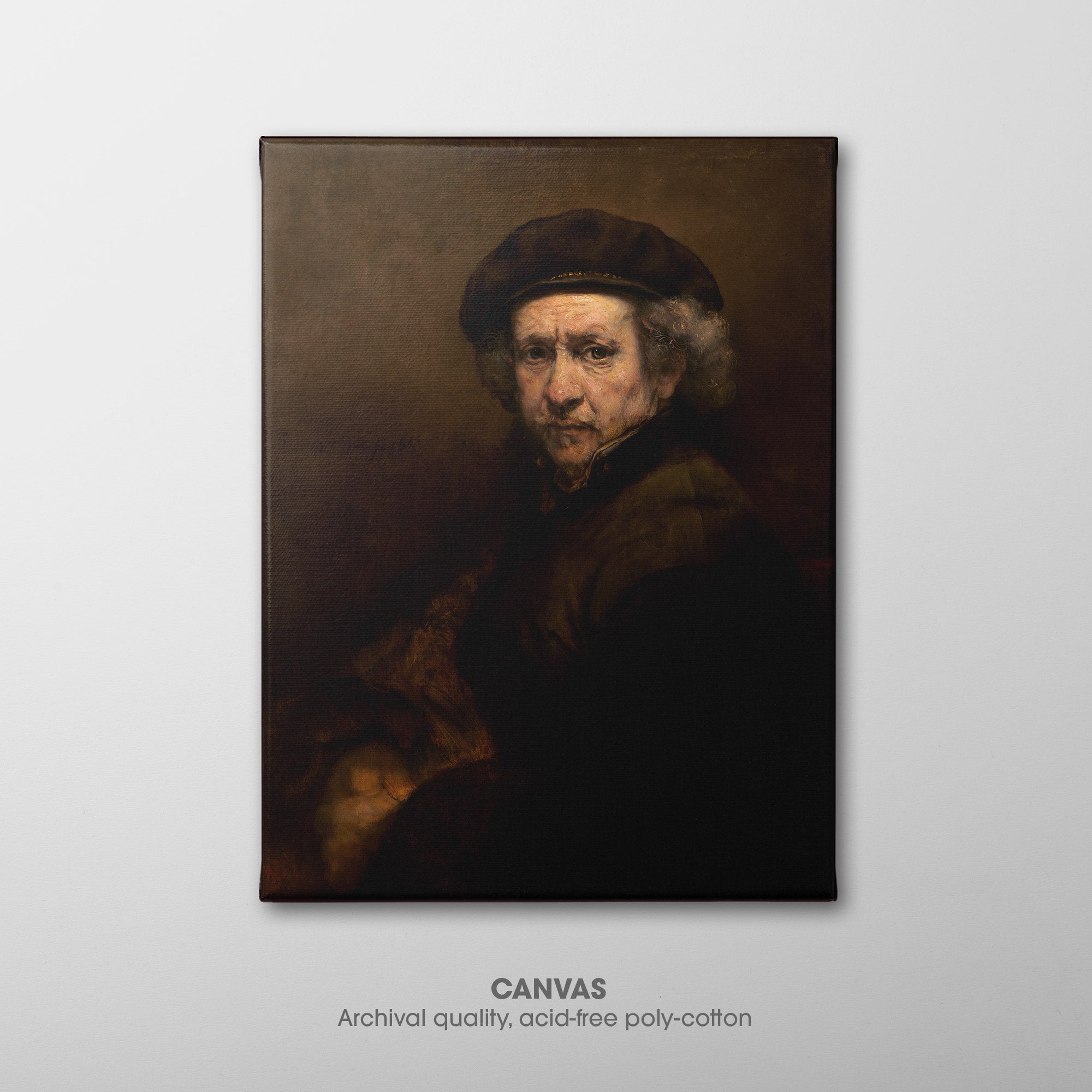
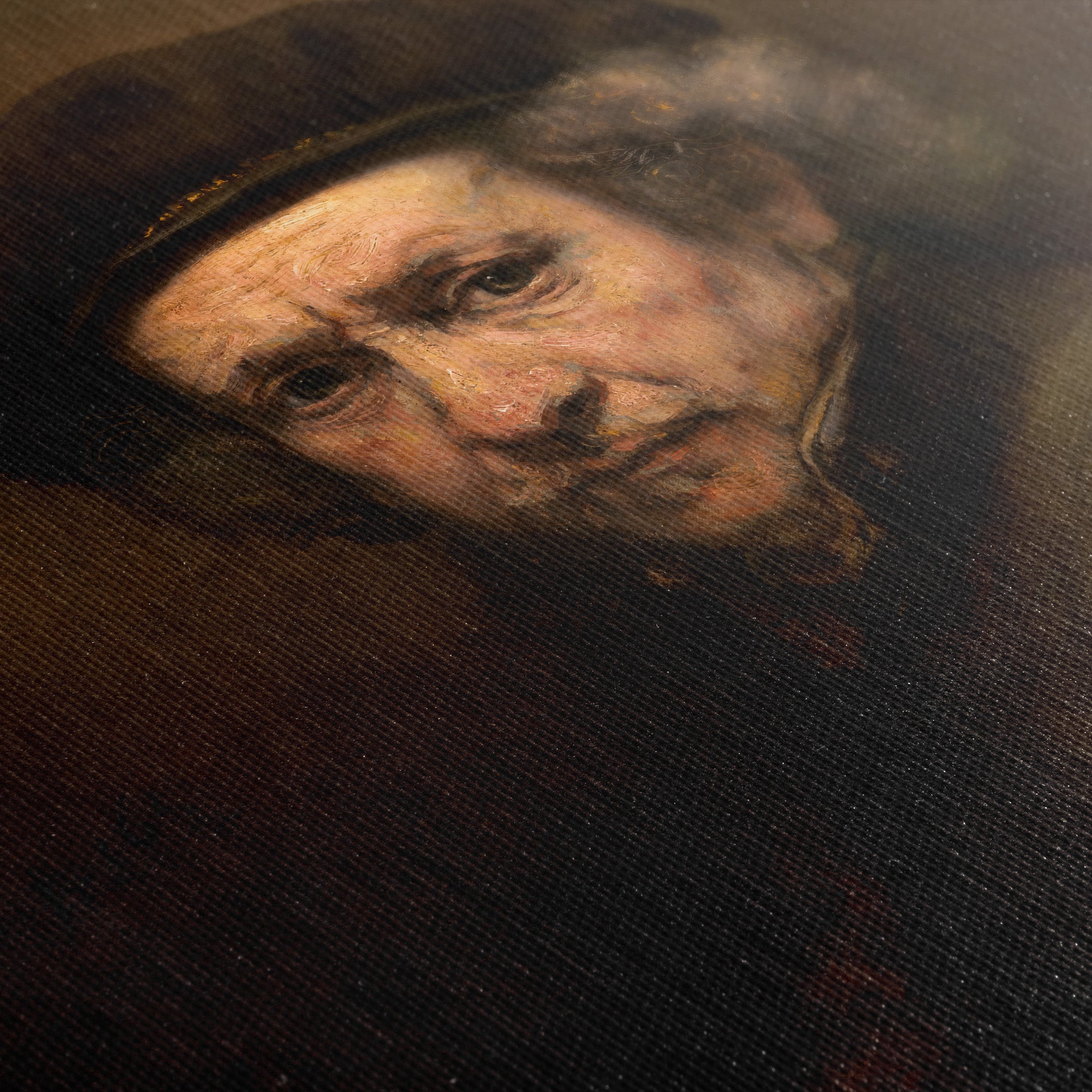 Self-Portrait with Beret and Turned-Up Collar (1659) by Rembrandt van Rijn is one of over 40 self-portraits he created. Rembrandt is seated, wearing a fur cloak, his hands clasped in his lap. His face is well lit with detailed brushwork, while his ➵
Self-Portrait with Beret and Turned-Up Collar (1659) by Rembrandt van Rijn is one of over 40 self-portraits he created. Rembrandt is seated, wearing a fur cloak, his hands clasped in his lap. His face is well lit with detailed brushwork, while his ➵◰ Canvas Reproductions
⧈ Framed Art Prints -
Self-Portrait ☶ Whistler ☰ Art Print
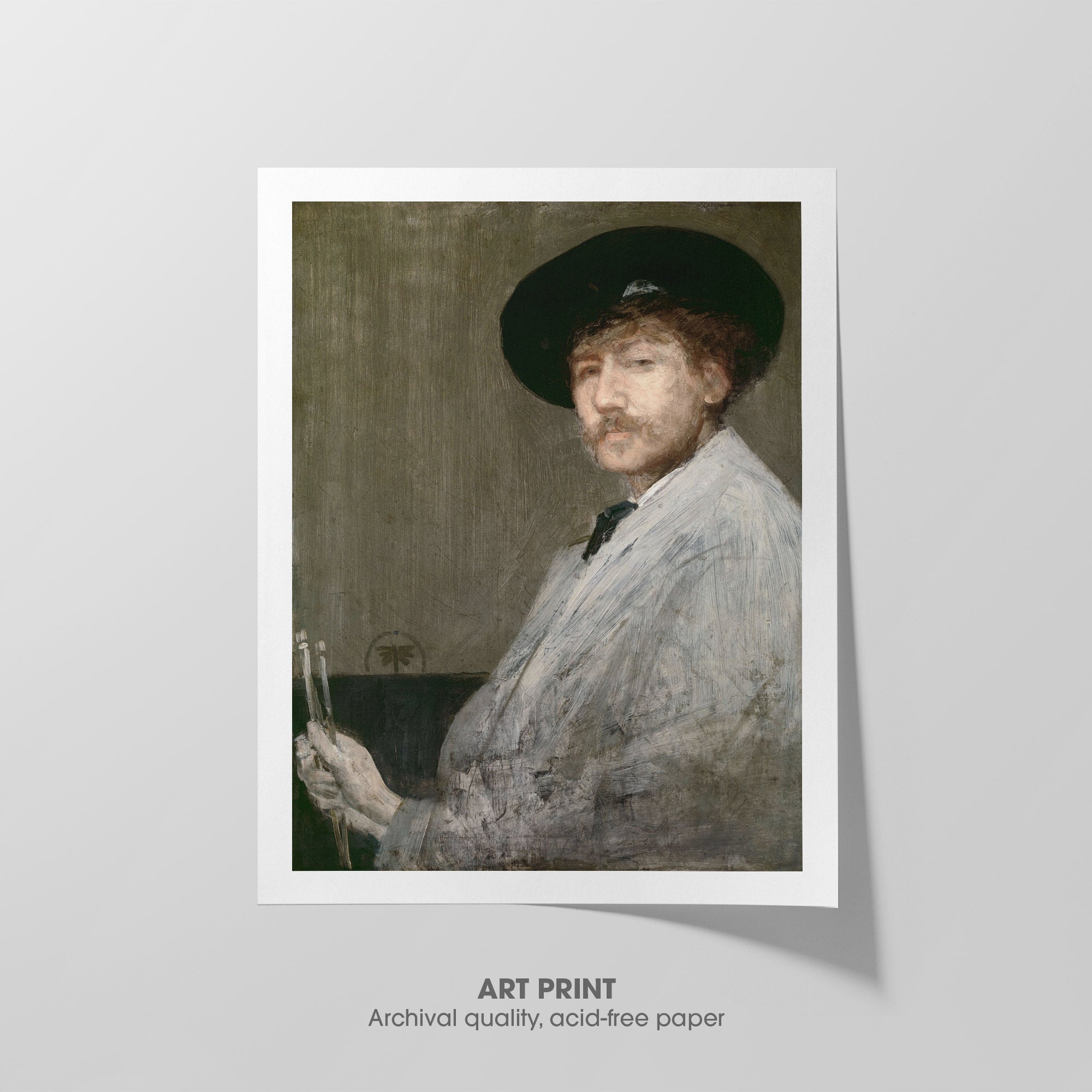
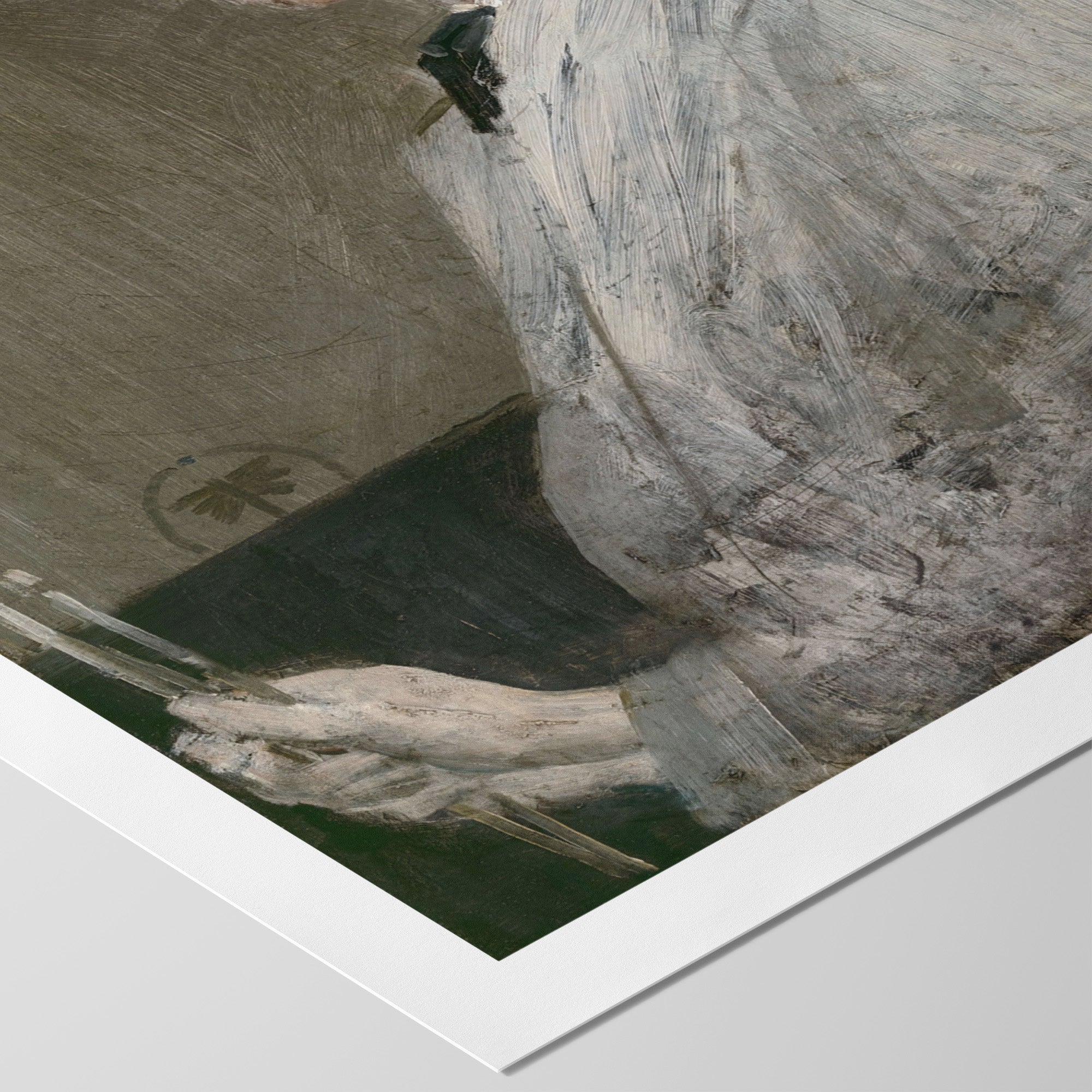 Arrangement in Gray, Portrait of the Painter (1872) by James McNeill Whistler depicts the artist in his painters smock holding brushes. His signature butterfly is prominently featured, first developed in the 1860s out of his interest in Asian art. The stylized butterfly ➵
Arrangement in Gray, Portrait of the Painter (1872) by James McNeill Whistler depicts the artist in his painters smock holding brushes. His signature butterfly is prominently featured, first developed in the 1860s out of his interest in Asian art. The stylized butterfly ➵◰ Canvas Reproductions
⧈ Framed Art Prints -
Self-Portrait ☶ Whistler ☰ Canvas
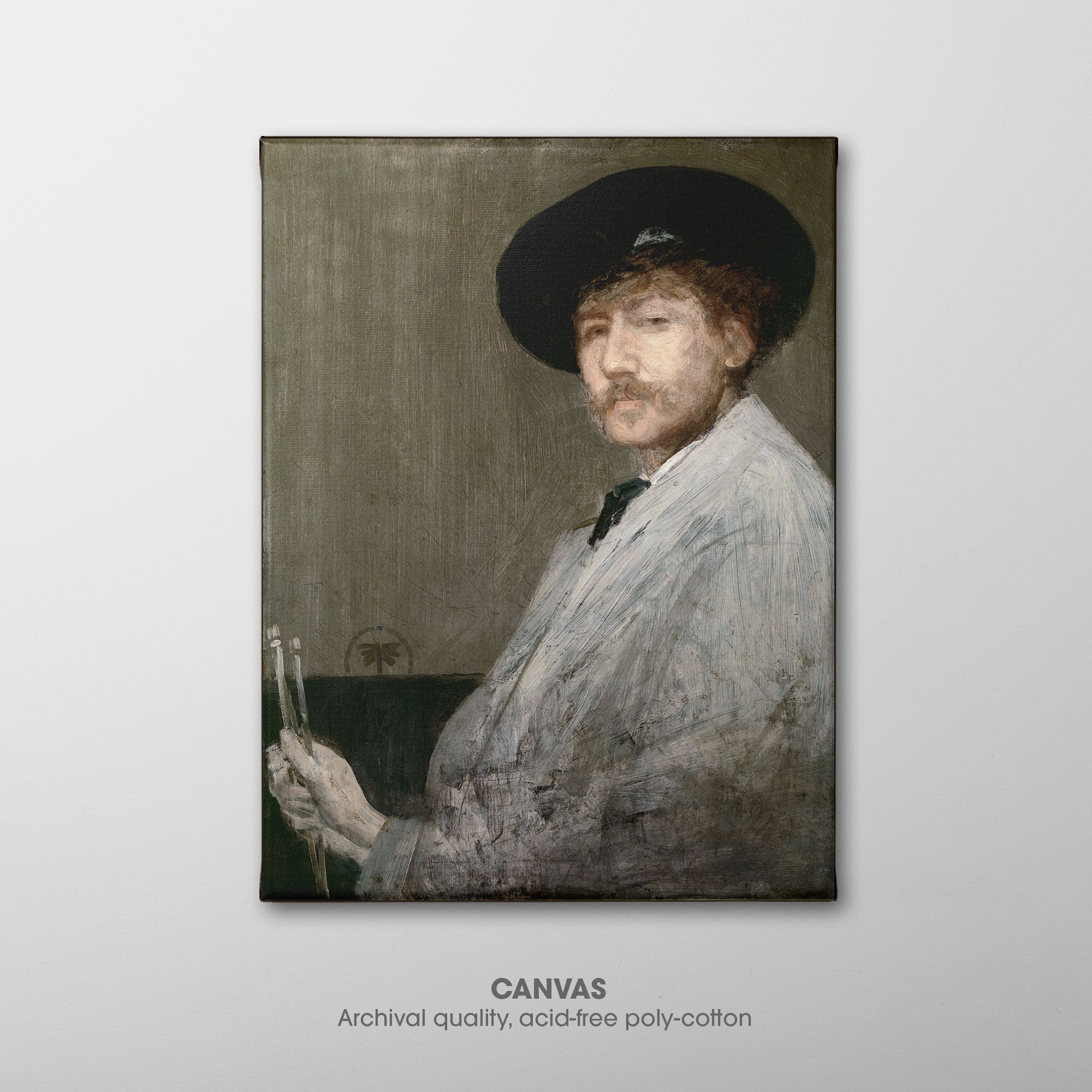
 Arrangement in Gray, Portrait of the Painter (1872) by James McNeill Whistler depicts the artist in his painters smock holding brushes. His signature butterfly is prominently featured, first developed in the 1860s out of his interest in Asian art. The stylized butterfly ➵
Arrangement in Gray, Portrait of the Painter (1872) by James McNeill Whistler depicts the artist in his painters smock holding brushes. His signature butterfly is prominently featured, first developed in the 1860s out of his interest in Asian art. The stylized butterfly ➵◰ Canvas Reproductions
⧈ Framed Art Prints -
Self-Portrait ☷ Gauguin ☰ Art Print

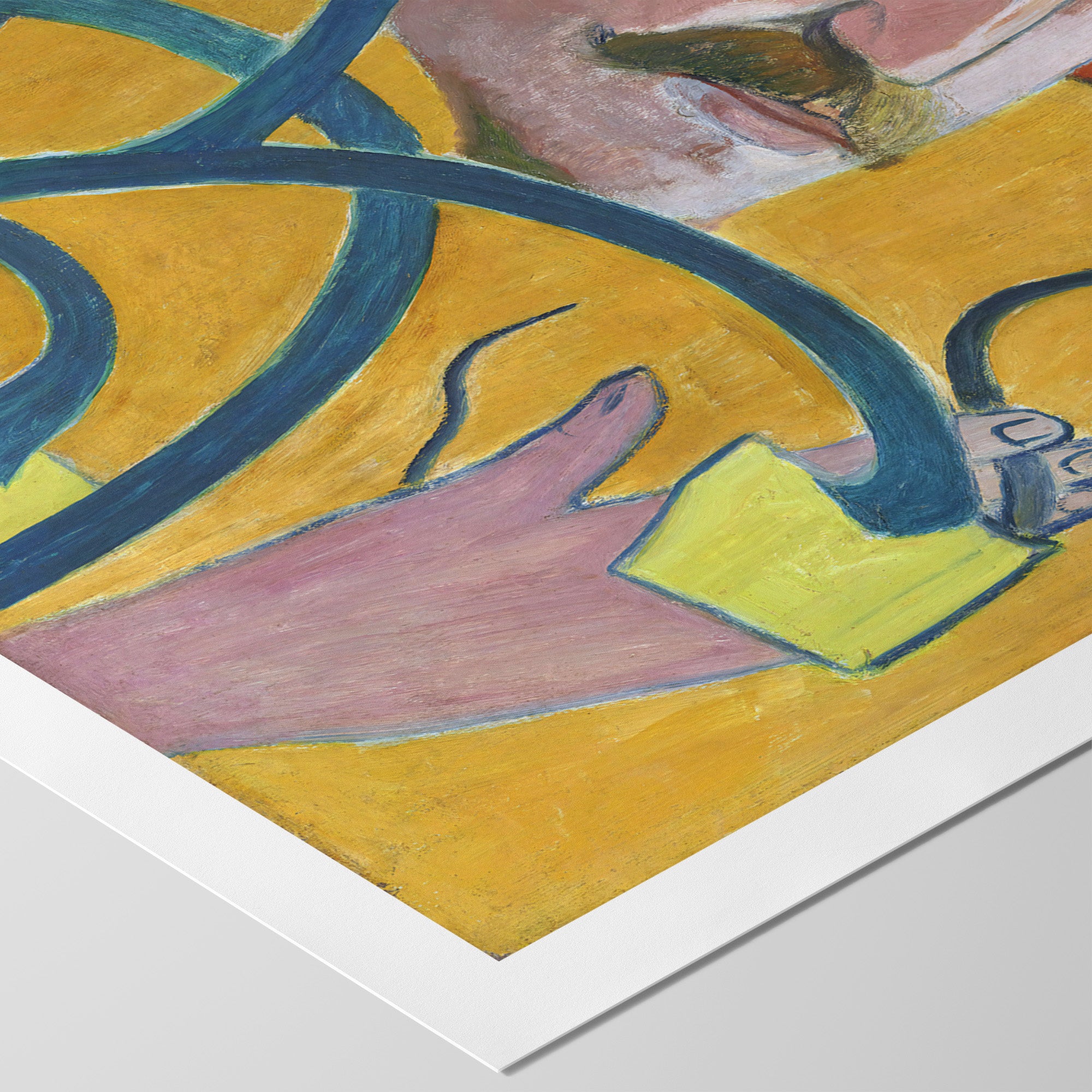 Self-Portrait with Halo and Snake (1889) by Paul Gauguin is one of more than 40 self-portraits he completed during his lifetime. This portrait demonstrates his use of religious symbolism, and the influence of Japanese wood-block prints. Gauguin divides the canvas in half, ➵
Self-Portrait with Halo and Snake (1889) by Paul Gauguin is one of more than 40 self-portraits he completed during his lifetime. This portrait demonstrates his use of religious symbolism, and the influence of Japanese wood-block prints. Gauguin divides the canvas in half, ➵◰ Canvas Reproductions
⧈ Framed Art Prints -
Self-Portrait ☷ Gauguin ☰ Canvas
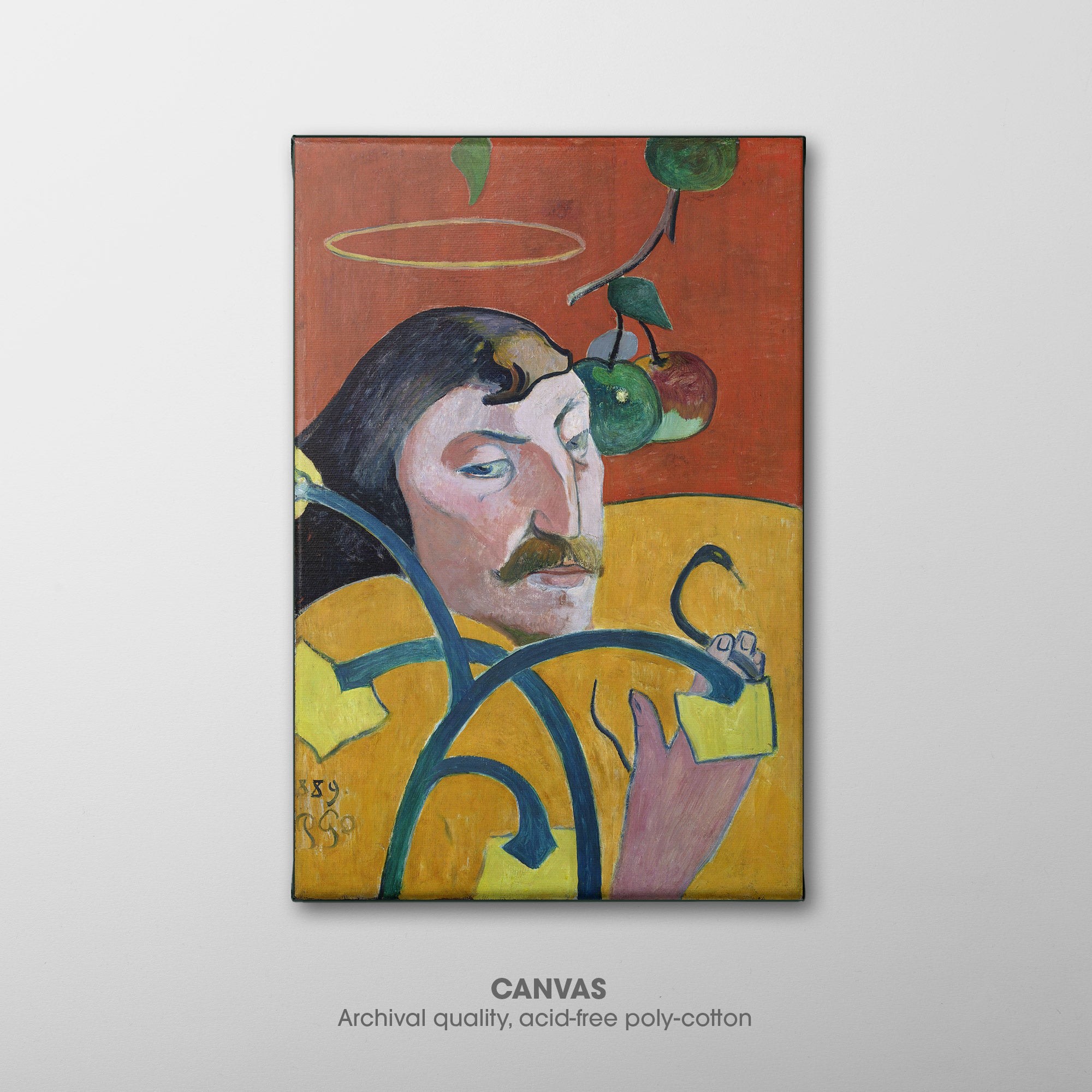
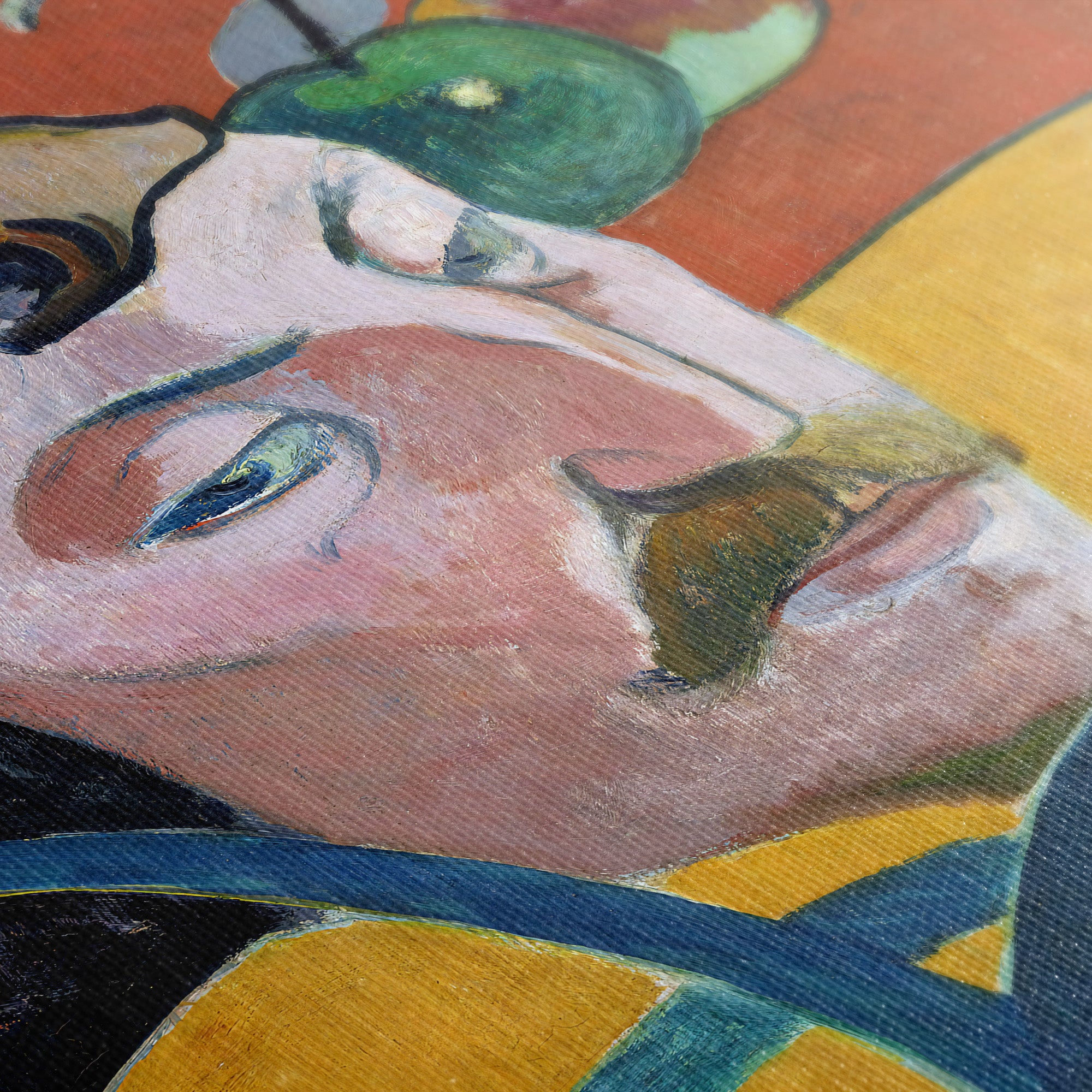 Self-Portrait with Halo and Snake (1889) by Paul Gauguin is one of more than 40 self-portraits he completed during his lifetime. This portrait demonstrates his use of religious symbolism, and the influence of Japanese wood-block prints. Gauguin divides the canvas in half, ➵
Self-Portrait with Halo and Snake (1889) by Paul Gauguin is one of more than 40 self-portraits he completed during his lifetime. This portrait demonstrates his use of religious symbolism, and the influence of Japanese wood-block prints. Gauguin divides the canvas in half, ➵◰ Canvas Reproductions
⧈ Framed Art Prints -
Shaded Path ☷ Renoir ☶ Art Print
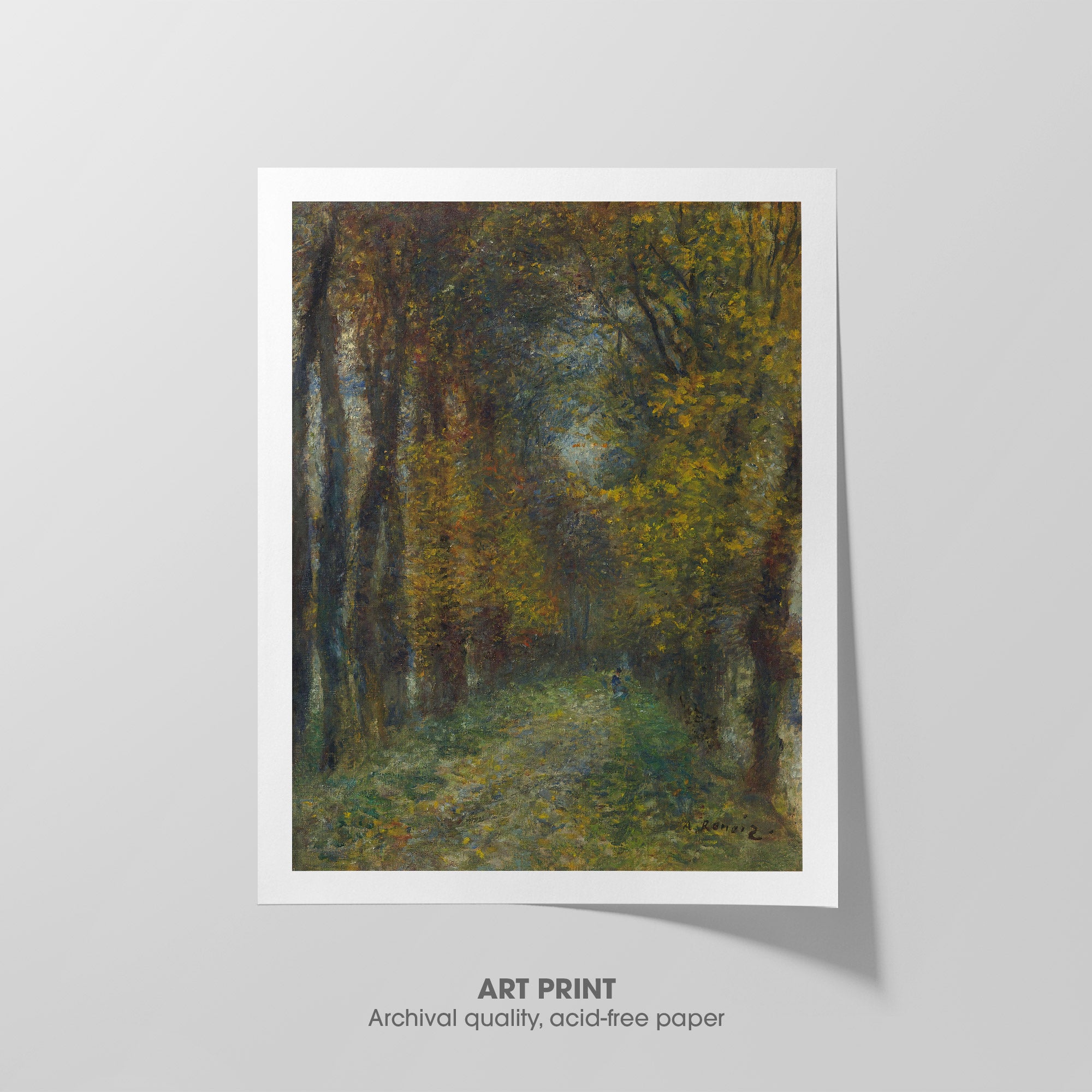
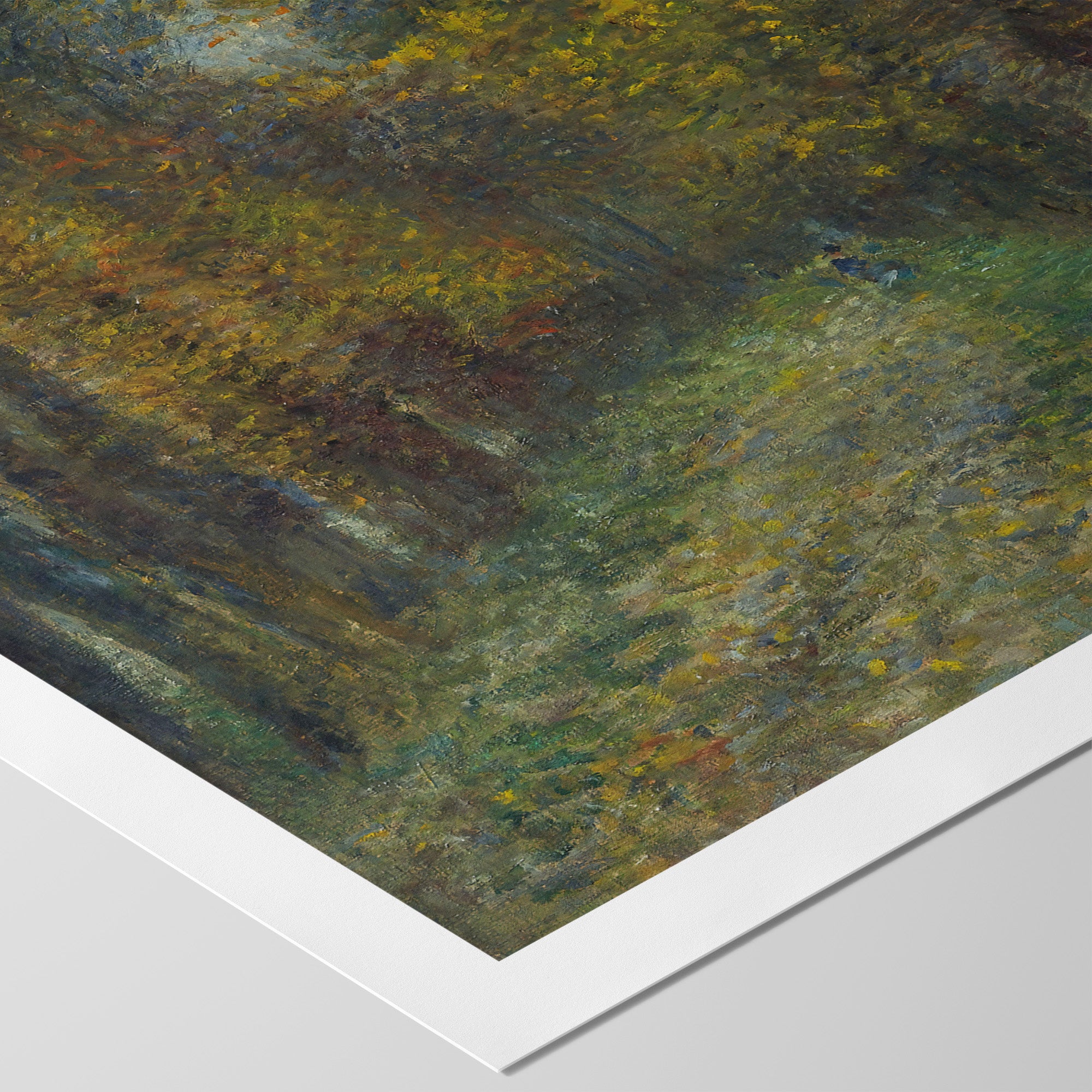 Shaded Path (1872, Le chemin ombragé) by Pierre-Auguste Renoir depicts a painter at work in the forest of Fontainebleau. Paths with overhanging trees allowed painters to explore light and shadow by rendering the effects of sunlight through thick foliage. The forest of ➵
Shaded Path (1872, Le chemin ombragé) by Pierre-Auguste Renoir depicts a painter at work in the forest of Fontainebleau. Paths with overhanging trees allowed painters to explore light and shadow by rendering the effects of sunlight through thick foliage. The forest of ➵◰ Canvas Reproductions
⧈ Framed Art Prints -
Shaded Path ☷ Renoir ☶ Canvas
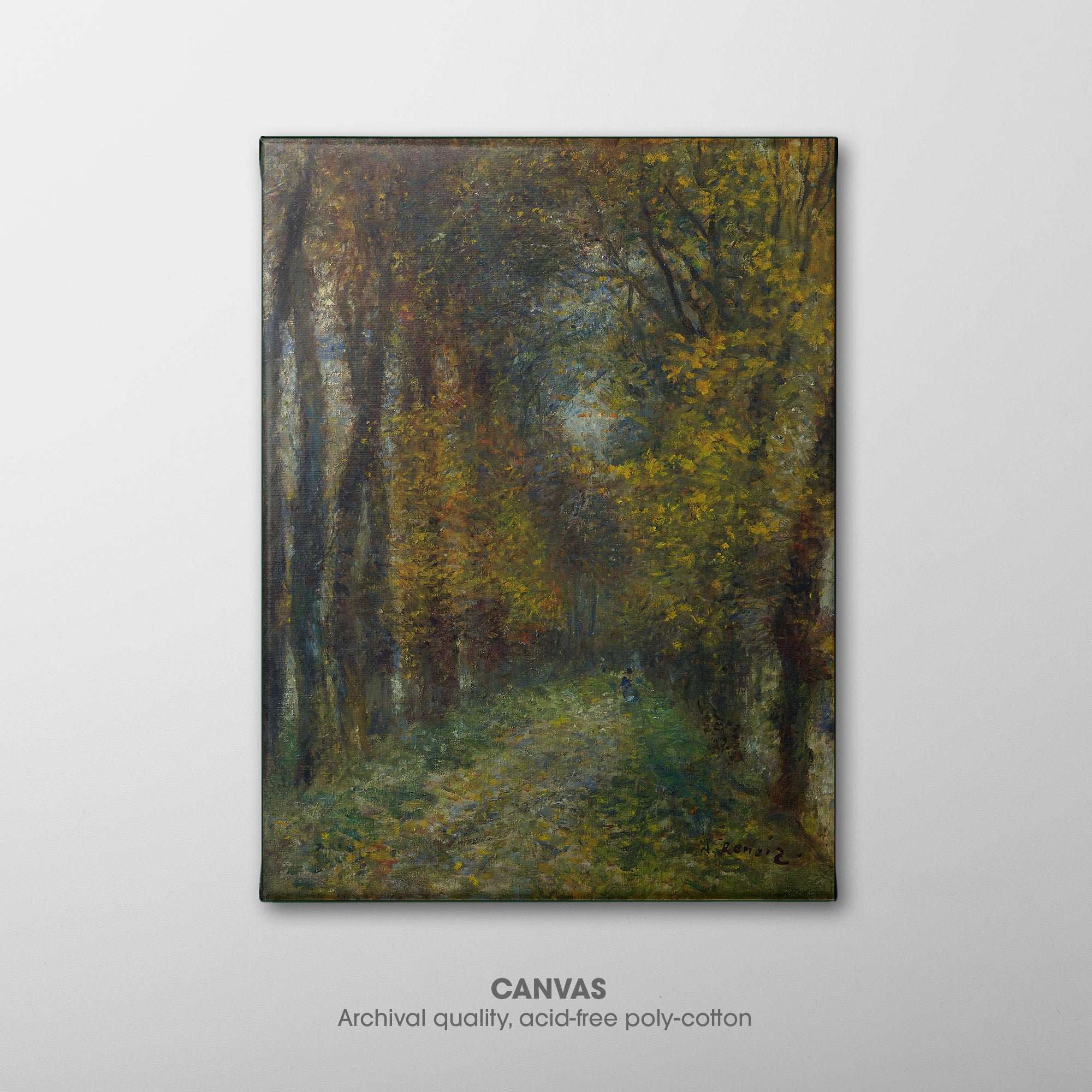
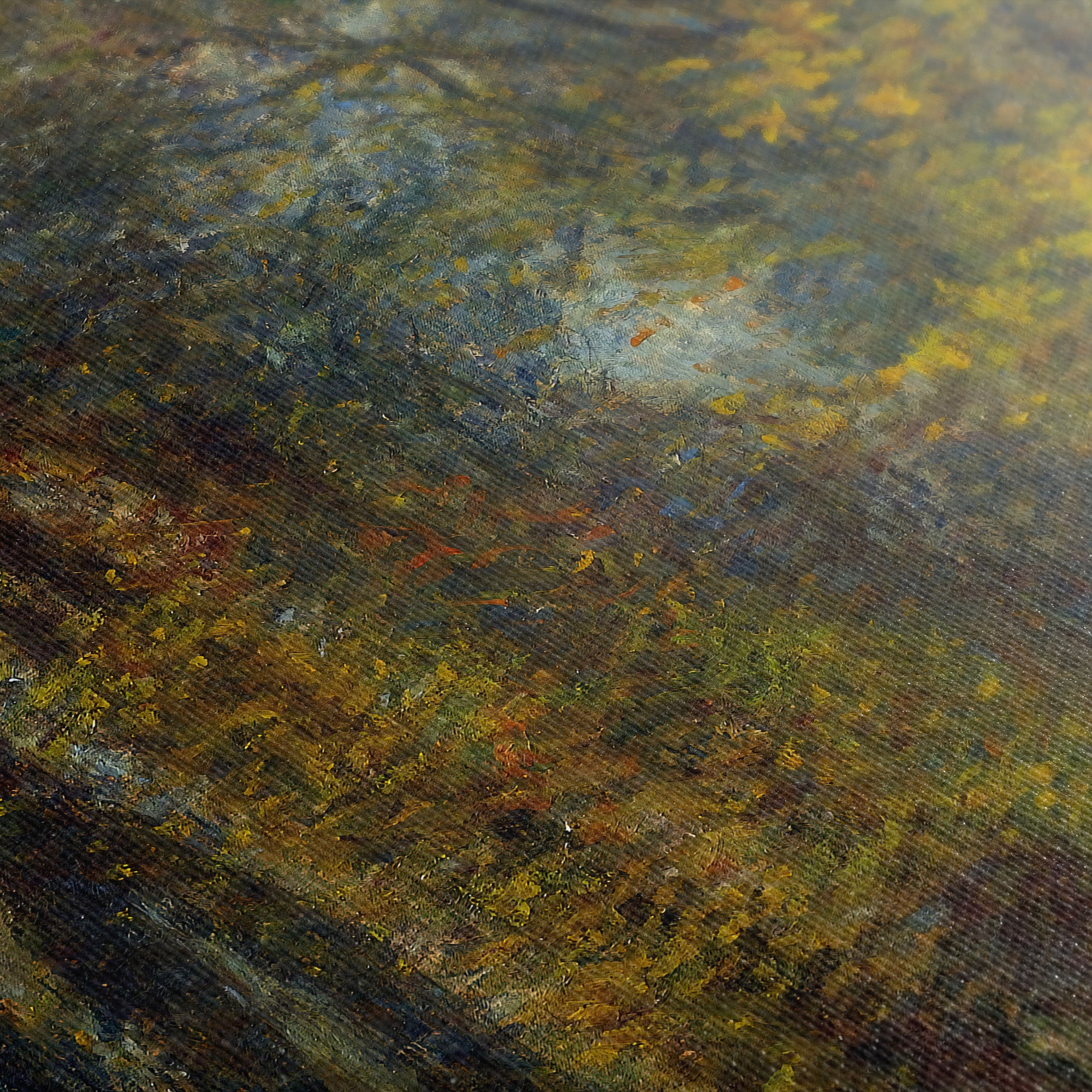 Shaded Path (1872, Le chemin ombragé) by Pierre-Auguste Renoir depicts a painter at work in the forest of Fontainebleau. Paths with overhanging trees allowed painters to explore light and shadow by rendering the effects of sunlight through thick foliage. The forest of ➵
Shaded Path (1872, Le chemin ombragé) by Pierre-Auguste Renoir depicts a painter at work in the forest of Fontainebleau. Paths with overhanging trees allowed painters to explore light and shadow by rendering the effects of sunlight through thick foliage. The forest of ➵◰ Canvas Reproductions
⧈ Framed Art Prints -
Ship in the Storm ☵ Rousseau ☳ Art Print

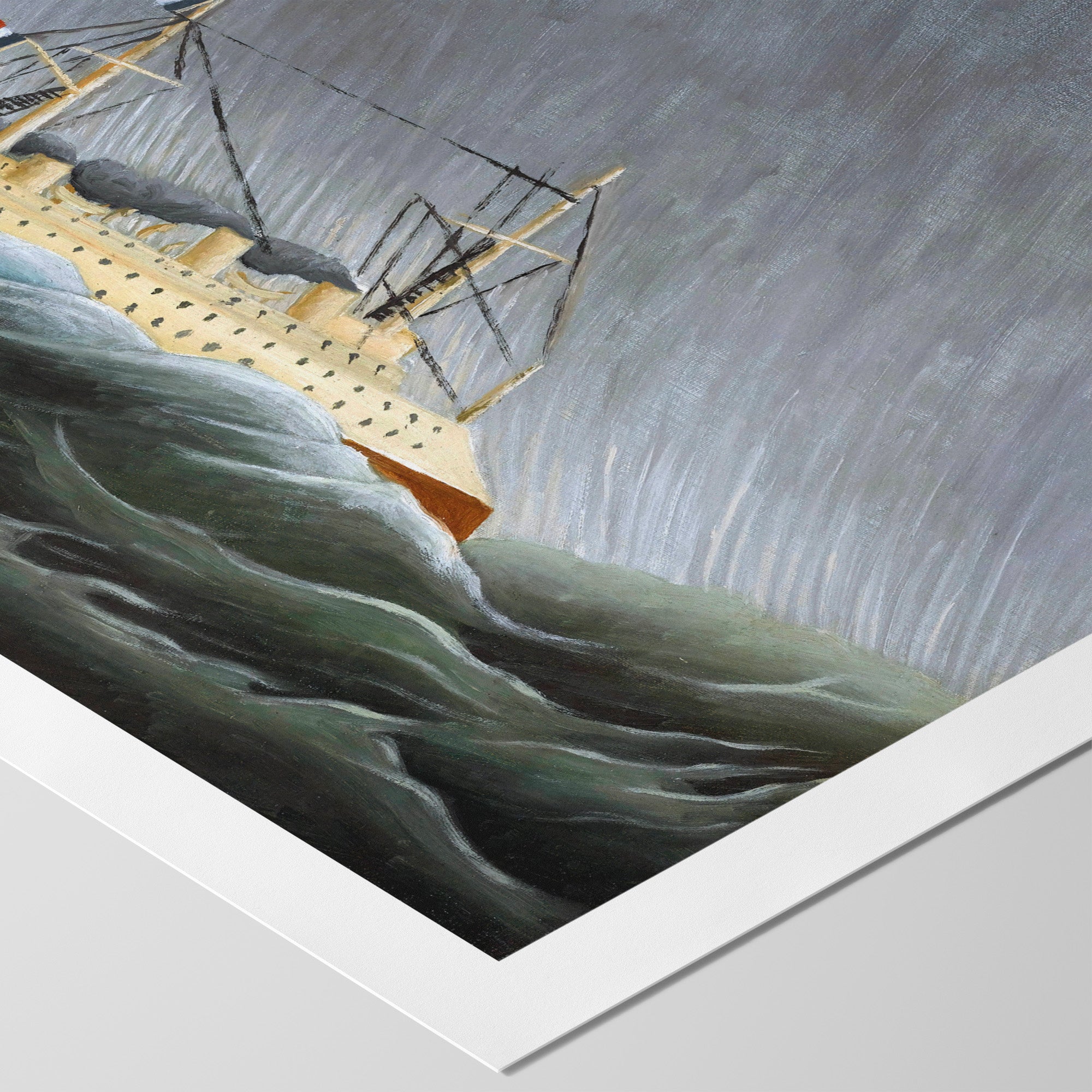 Ship in the Storm (1899, Navire dans la Tempête) by Henri Rousseau appears to be based on a combination of different ships, featuring portholes like an ocean liner, and a cutwater like a battleship. Rough gray waves and darkened sky contrast with ➵
Ship in the Storm (1899, Navire dans la Tempête) by Henri Rousseau appears to be based on a combination of different ships, featuring portholes like an ocean liner, and a cutwater like a battleship. Rough gray waves and darkened sky contrast with ➵◰ Canvas Reproductions
⧈ Framed Art Prints -
Ship in the Storm ☵ Rousseau ☳ Canvas
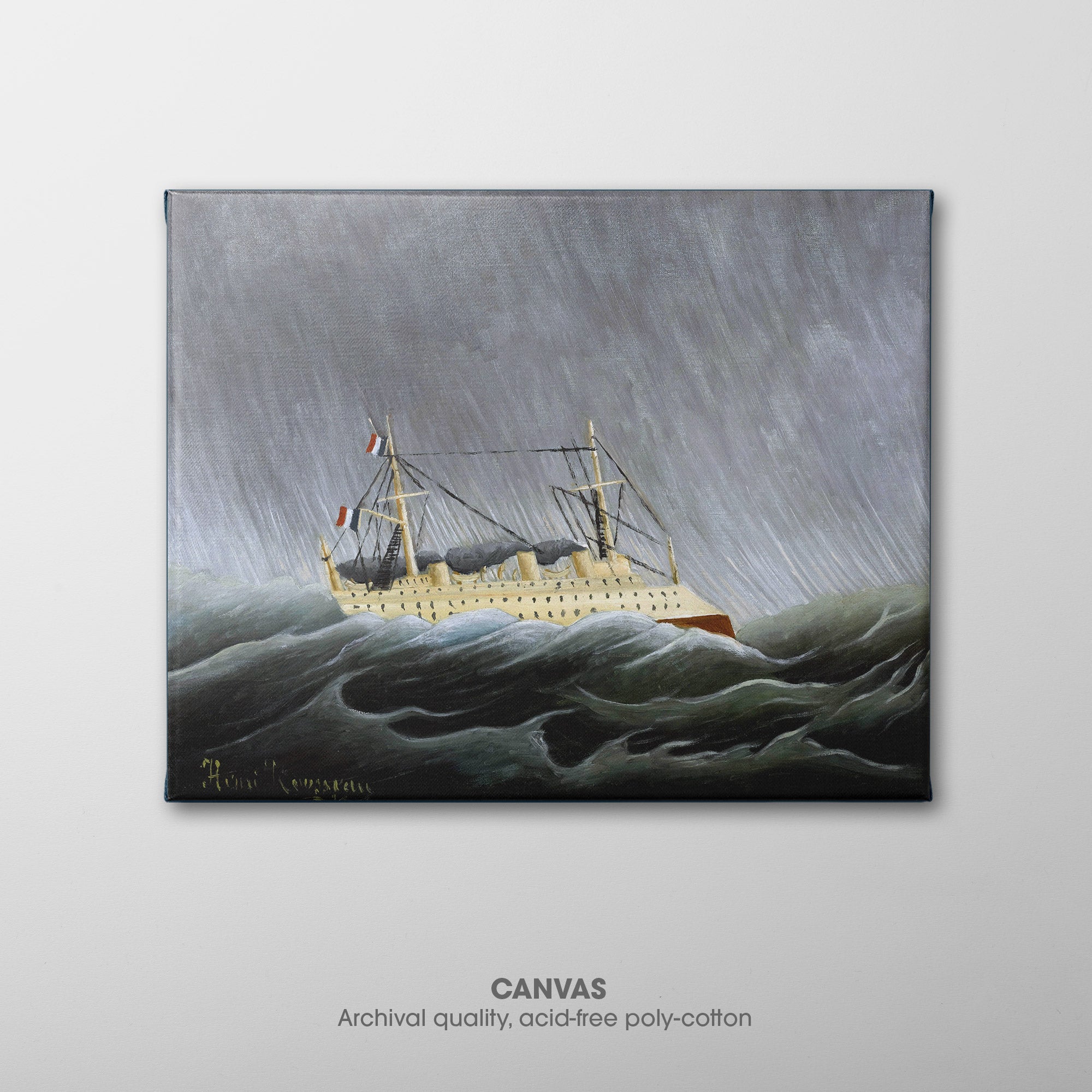
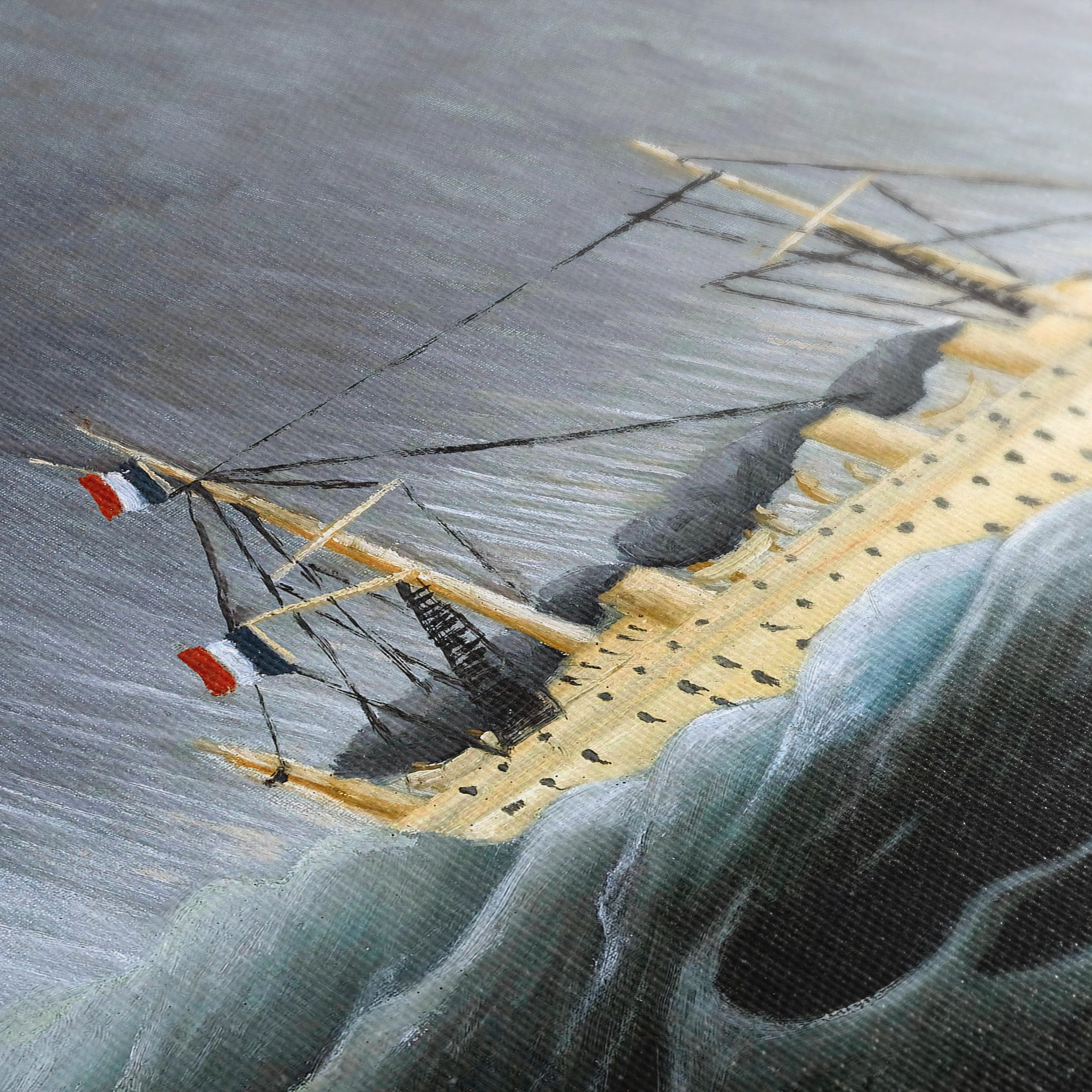 Ship in the Storm (1899, Navire dans la Tempête) by Henri Rousseau appears to be based on a combination of different ships, featuring portholes like an ocean liner, and a cutwater like a battleship. Rough gray waves and darkened sky contrast with ➵
Ship in the Storm (1899, Navire dans la Tempête) by Henri Rousseau appears to be based on a combination of different ships, featuring portholes like an ocean liner, and a cutwater like a battleship. Rough gray waves and darkened sky contrast with ➵◰ Canvas Reproductions
⧈ Framed Art Prints -
Skull of a Skeleton with Burning Cigarette ☷ Van Gogh ☲ Art Print

 Skull of a Skeleton with Burning Cigarette (1886) by Vincent van Gogh is self descriptive. He depicted skeletons and skulls only a few times in his career. It is considered a memento mori, a reminder of death, at a time when he ➵
Skull of a Skeleton with Burning Cigarette (1886) by Vincent van Gogh is self descriptive. He depicted skeletons and skulls only a few times in his career. It is considered a memento mori, a reminder of death, at a time when he ➵◰ Canvas Reproductions
⧈ Framed Art Prints -
Skull of a Skeleton with Burning Cigarette ☷ Van Gogh ☲ Canvas

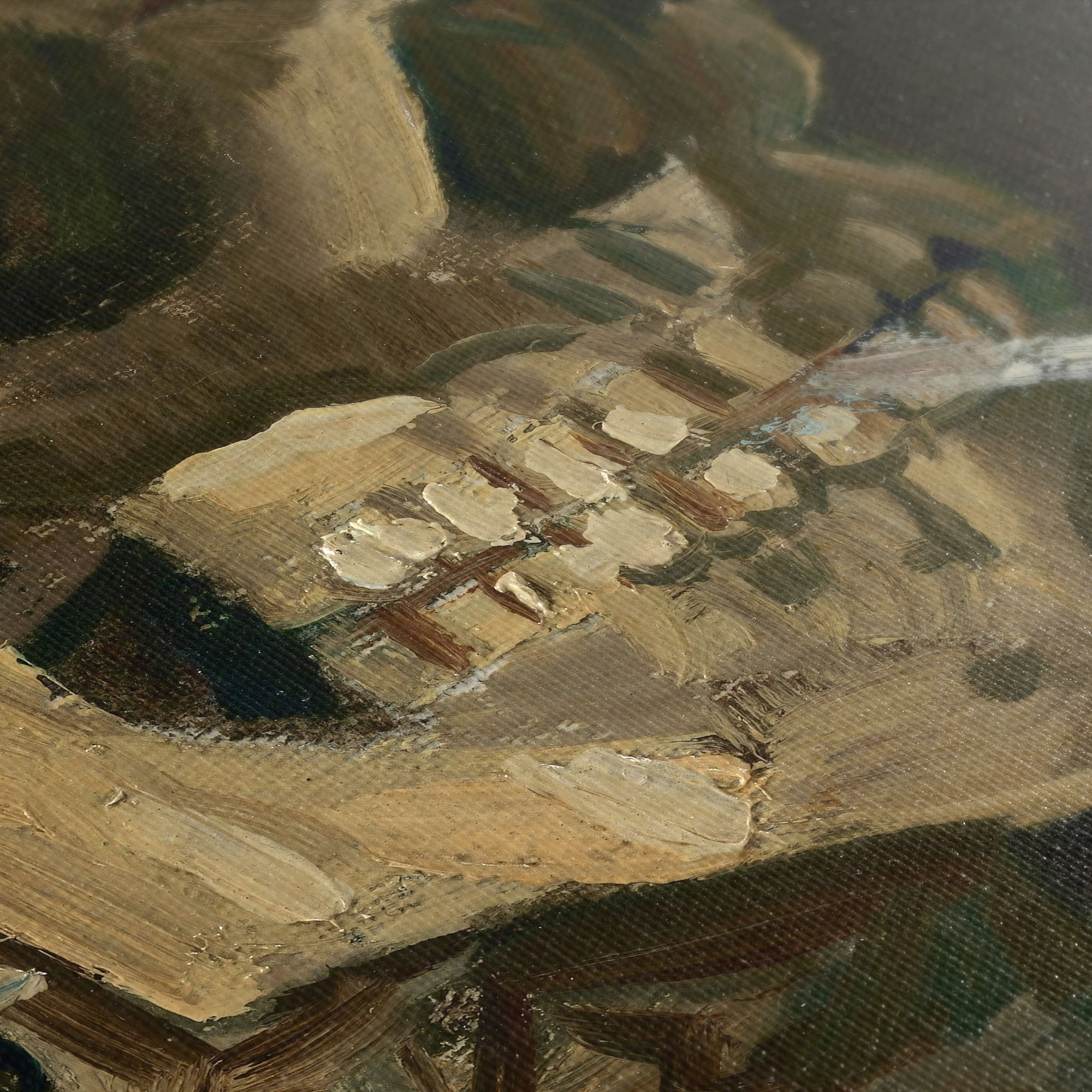 Skull of a Skeleton with Burning Cigarette (1886) by Vincent van Gogh is self descriptive. He depicted skeletons and skulls only a few times in his career. It is considered a memento mori, a reminder of death, at a time when he ➵
Skull of a Skeleton with Burning Cigarette (1886) by Vincent van Gogh is self descriptive. He depicted skeletons and skulls only a few times in his career. It is considered a memento mori, a reminder of death, at a time when he ➵◰ Canvas Reproductions
⧈ Framed Art Prints -
Skull of a Skeleton with Burning Cigarette ☷ Van Gogh ☲ Woven Art Blanket

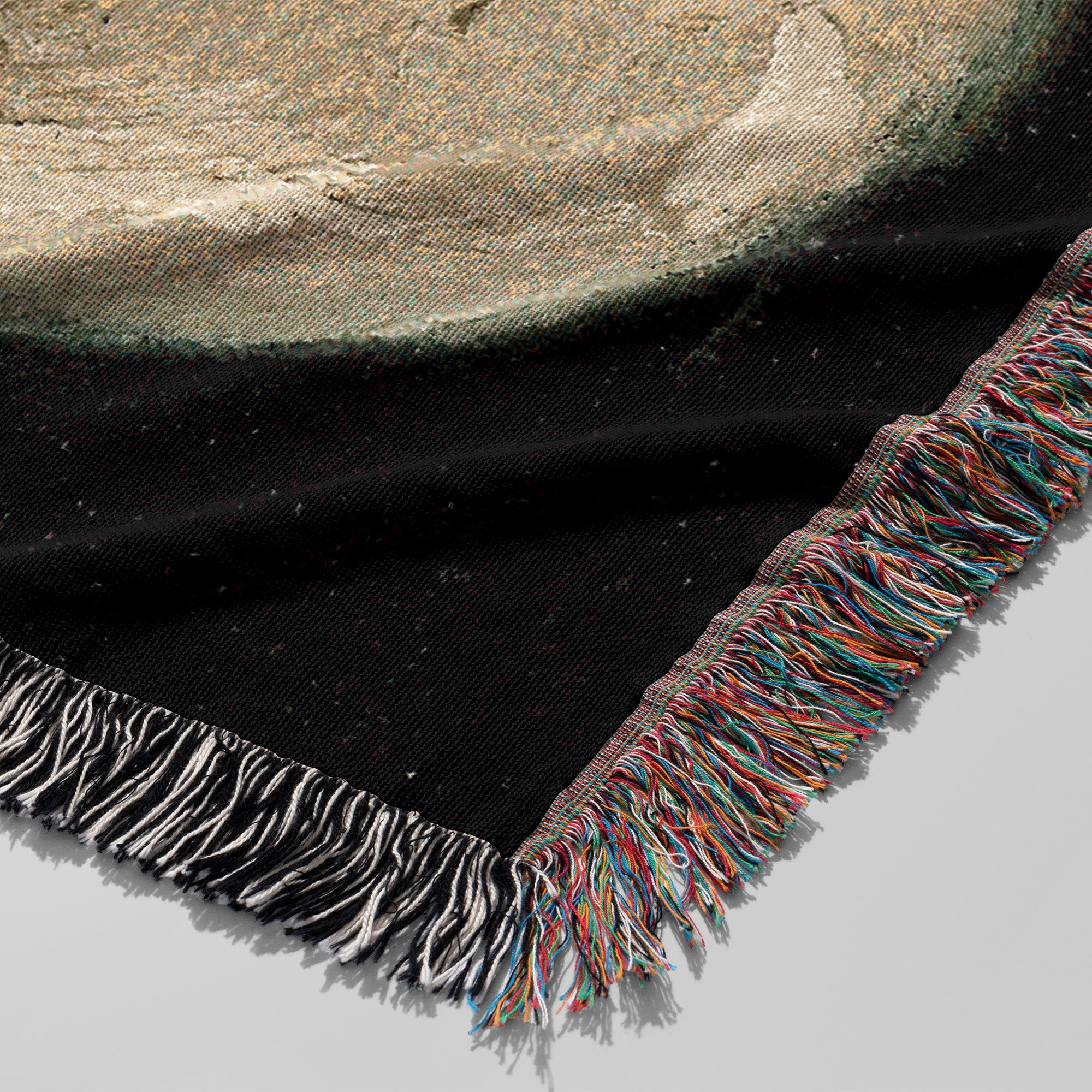 Skull of a Skeleton with Burning Cigarette (1886) by Vincent van Gogh is self descriptive. He depicted skeletons and skulls only a few times in his career. It is considered a memento mori, a reminder of death, at a time when he ➵
Skull of a Skeleton with Burning Cigarette (1886) by Vincent van Gogh is self descriptive. He depicted skeletons and skulls only a few times in his career. It is considered a memento mori, a reminder of death, at a time when he ➵◰ Canvas Reproductions
⧈ Framed Art Prints -
Soir Bleu ☳ Hopper ☵ Art Print
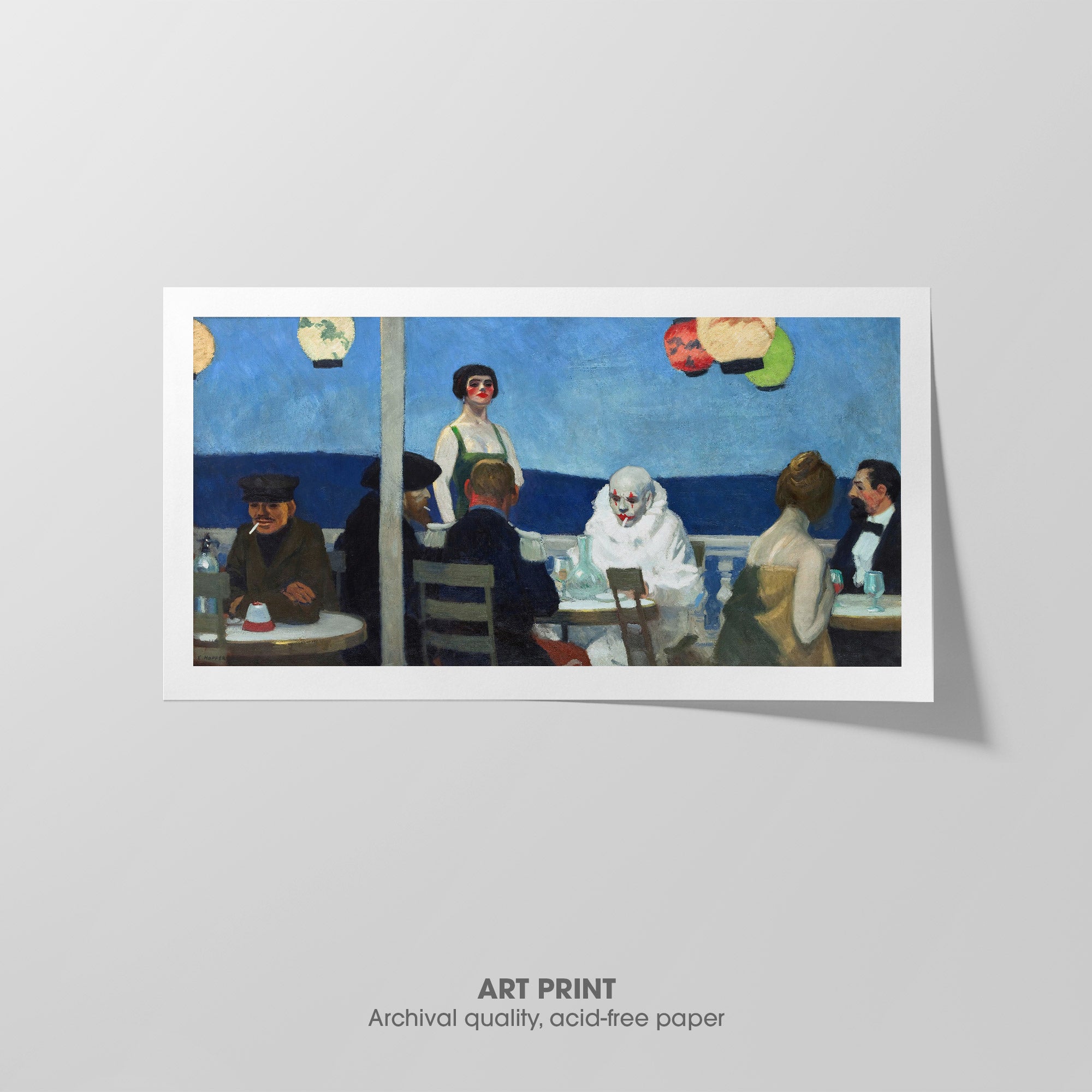
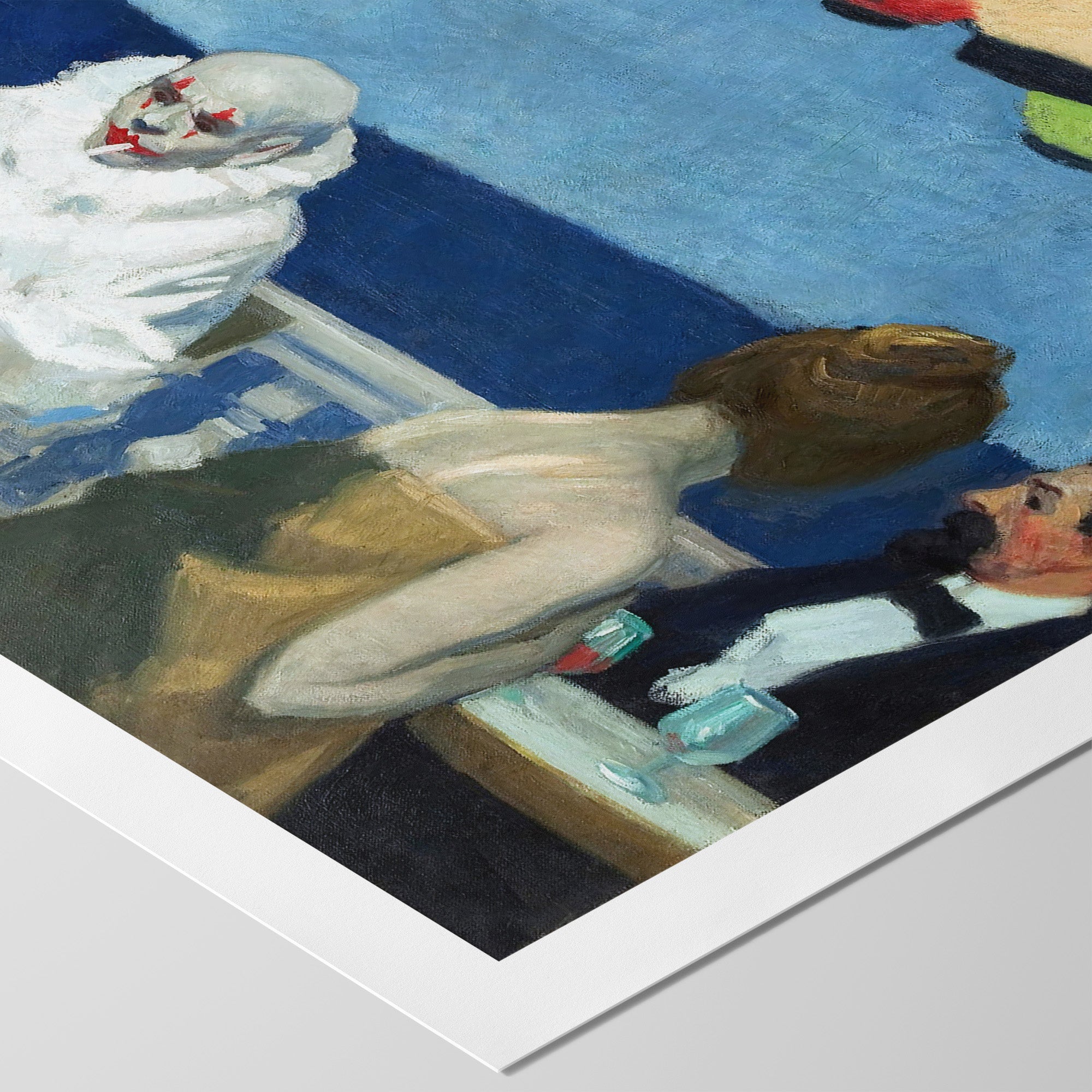 Soir Bleu (1914) by Edward Hopper was painted in Paris, and titled in French (Blue Evening). It depicts an assortment of people gathered on a terrace, sitting around small tables with Chinese lanterns overhead. On the far left, a man smokes a ➵
Soir Bleu (1914) by Edward Hopper was painted in Paris, and titled in French (Blue Evening). It depicts an assortment of people gathered on a terrace, sitting around small tables with Chinese lanterns overhead. On the far left, a man smokes a ➵◰ Canvas Reproductions
⧈ Framed Art Prints -
Soir Bleu ☳ Hopper ☵ Canvas

 Soir Bleu (1914) by Edward Hopper was painted in Paris, and titled in French (Blue Evening). It depicts an assortment of people gathered on a terrace, sitting around small tables with Chinese lanterns overhead. On the far left, a man smokes a ➵
Soir Bleu (1914) by Edward Hopper was painted in Paris, and titled in French (Blue Evening). It depicts an assortment of people gathered on a terrace, sitting around small tables with Chinese lanterns overhead. On the far left, a man smokes a ➵◰ Canvas Reproductions
⧈ Framed Art Prints -
Starry Night Over the Rhône ☵ Van Gogh ☰ Art Print

 Starry Night Over the Rhône (1888) by Vincent van Gogh was painted on the bank of the river a short walk from the Yellow House. Intrigued by the challenge of painting at night, the night sky and lighting effects became the subject ➵
Starry Night Over the Rhône (1888) by Vincent van Gogh was painted on the bank of the river a short walk from the Yellow House. Intrigued by the challenge of painting at night, the night sky and lighting effects became the subject ➵◰ Canvas Reproductions
⧈ Framed Art Prints -
Starry Night Over the Rhône ☵ Van Gogh ☰ Canvas

 Starry Night Over the Rhône (1888) by Vincent van Gogh was painted on the bank of the river a short walk from the Yellow House. Intrigued by the challenge of painting at night, the night sky and lighting effects became the subject ➵
Starry Night Over the Rhône (1888) by Vincent van Gogh was painted on the bank of the river a short walk from the Yellow House. Intrigued by the challenge of painting at night, the night sky and lighting effects became the subject ➵◰ Canvas Reproductions
⧈ Framed Art Prints -
Starry Night ☲ Van Gogh ☰ Art Print

 The Starry Night (1889) by Vincent van Gogh is one of the most recognizable paintings in Western art. It depicts the view from his asylum room at Saint-Rémy-de-Provence. Van Gogh voluntarily admitted himself to the asylum after the breakdown that resulted in ➵
The Starry Night (1889) by Vincent van Gogh is one of the most recognizable paintings in Western art. It depicts the view from his asylum room at Saint-Rémy-de-Provence. Van Gogh voluntarily admitted himself to the asylum after the breakdown that resulted in ➵◰ Canvas Reproductions
⧈ Framed Art Prints ⨳ Blankets -
Starry Night ☲ Van Gogh ☰ Canvas

 The Starry Night (1889) by Vincent van Gogh is one of the most recognizable paintings in Western art. It depicts the view from his asylum room at Saint-Rémy-de-Provence. Van Gogh voluntarily admitted himself to the asylum after the breakdown that resulted in ➵
The Starry Night (1889) by Vincent van Gogh is one of the most recognizable paintings in Western art. It depicts the view from his asylum room at Saint-Rémy-de-Provence. Van Gogh voluntarily admitted himself to the asylum after the breakdown that resulted in ➵◰ Canvas Reproductions
⧈ Framed Art Prints ⨳ Blankets -
Starry Night ☲ Van Gogh ☰ Woven Art Blanket
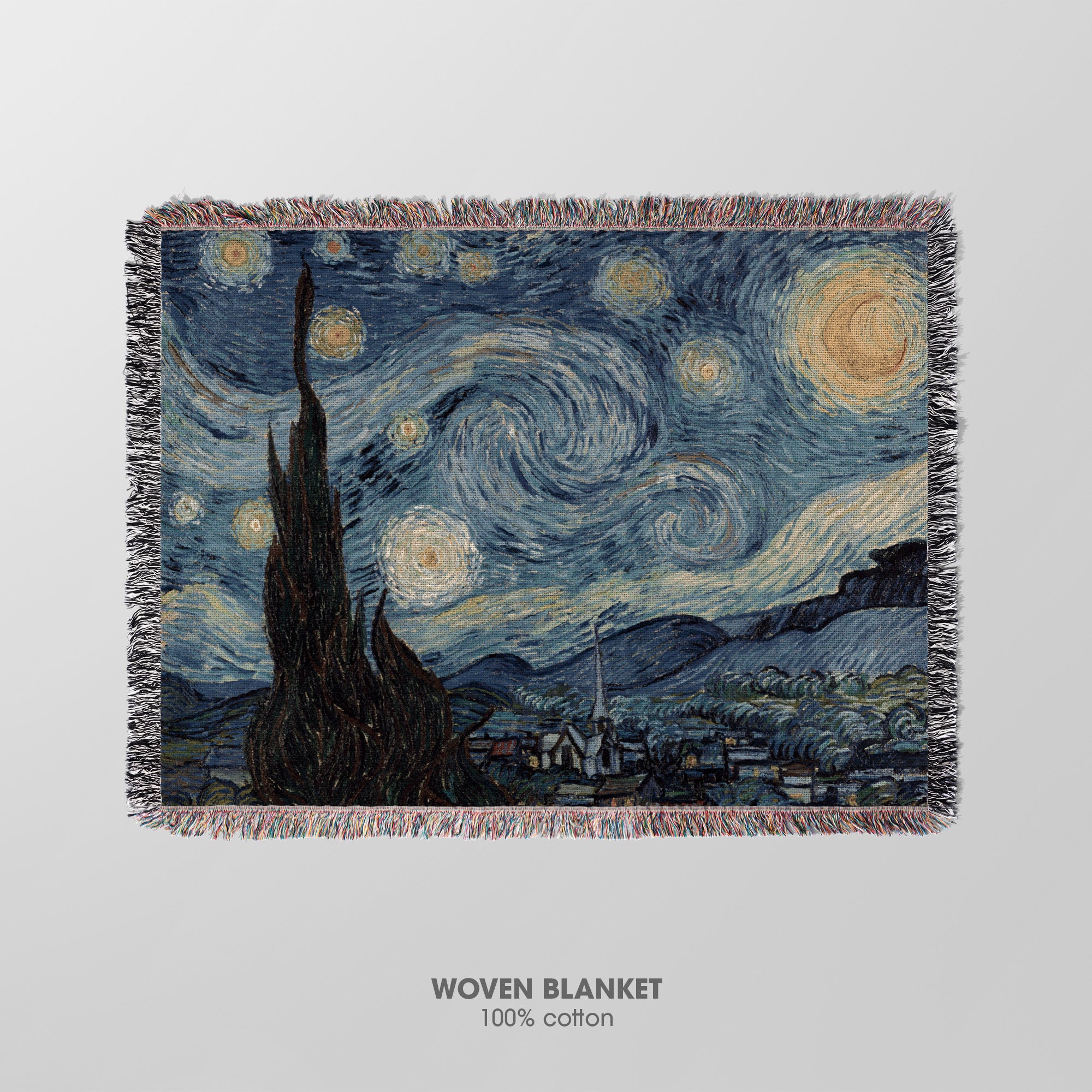
 The Starry Night (1889) by Vincent van Gogh is one of the most recognizable paintings in Western art. It depicts the view from his asylum room at Saint-Rémy-de-Provence. Van Gogh voluntarily admitted himself to the asylum after the breakdown that resulted in ➵
The Starry Night (1889) by Vincent van Gogh is one of the most recognizable paintings in Western art. It depicts the view from his asylum room at Saint-Rémy-de-Provence. Van Gogh voluntarily admitted himself to the asylum after the breakdown that resulted in ➵◰ Canvas Reproductions
⧈ Framed Art Prints ⨳ Blankets -
Storm on the Sea ☵ Rembrandt ☳ Art Print

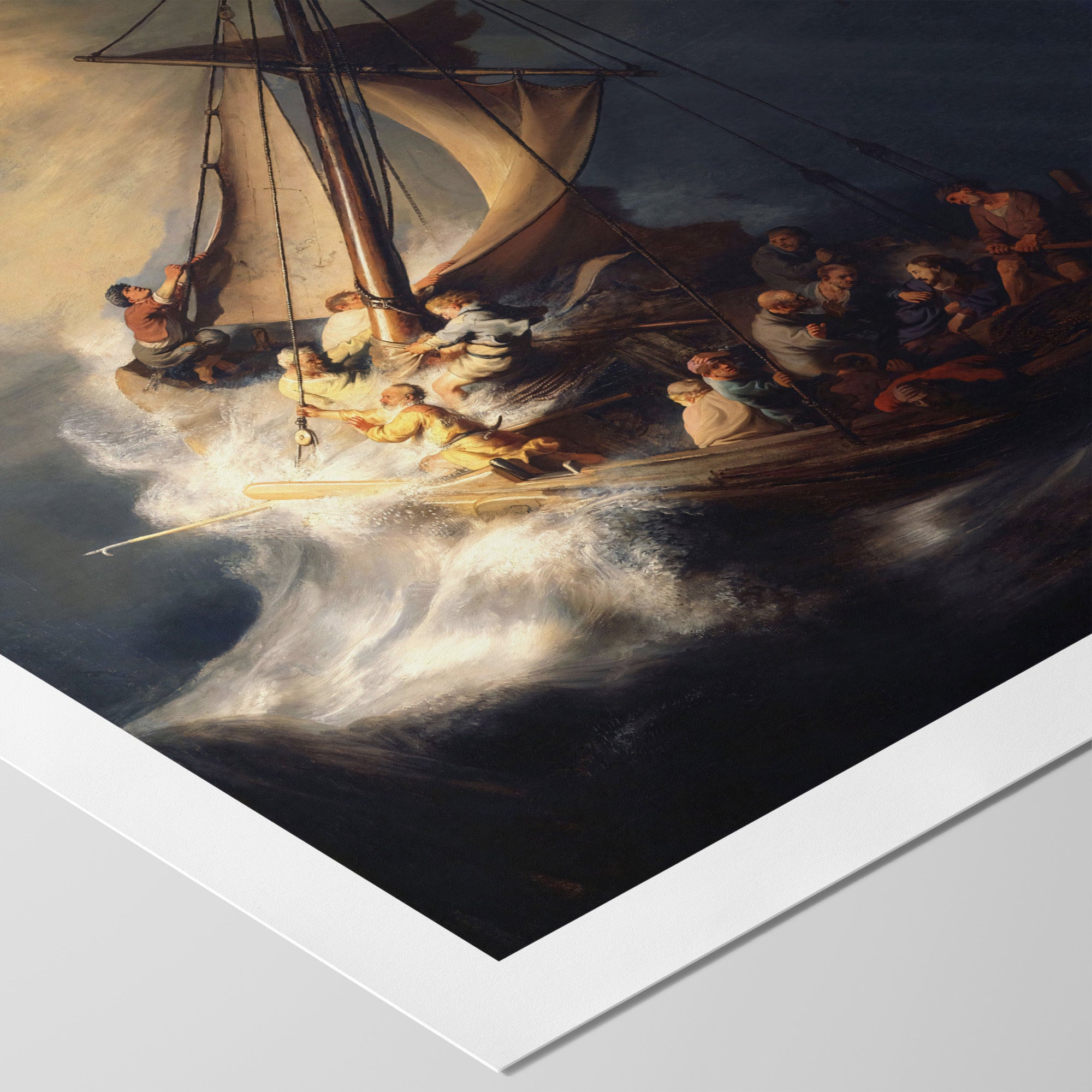 Christ in the Storm on the Sea of Galilee (1633) by Rembrandt van Rijn is among the largest and earliest of his works, and his only seascape. It represents the biblical event in which Jesus calmed the storm on the Sea of ➵
Christ in the Storm on the Sea of Galilee (1633) by Rembrandt van Rijn is among the largest and earliest of his works, and his only seascape. It represents the biblical event in which Jesus calmed the storm on the Sea of ➵◰ Canvas Reproductions
⧈ Framed Art Prints -
Storm on the Sea ☵ Rembrandt ☳ Canvas
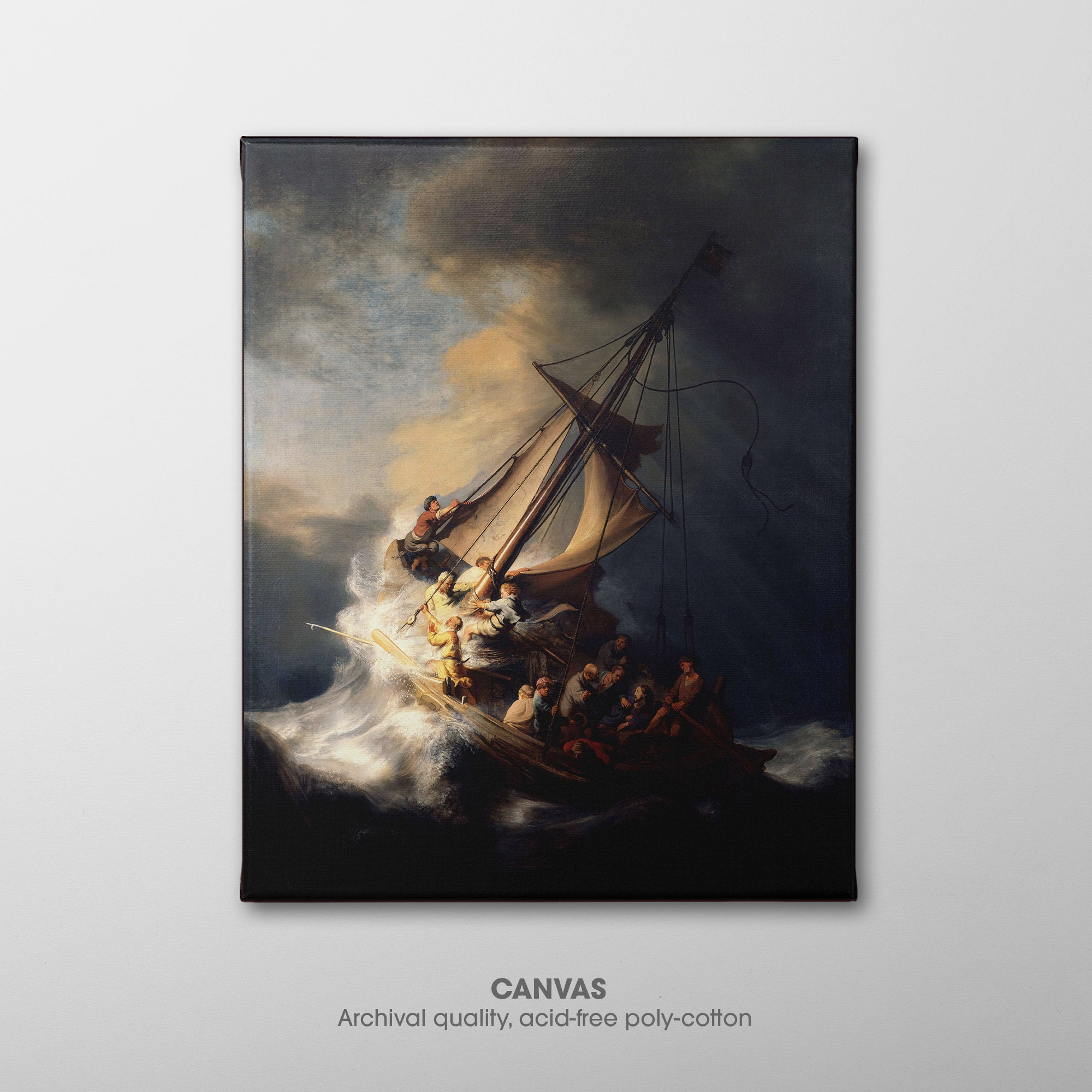
 Christ in the Storm on the Sea of Galilee (1633) by Rembrandt van Rijn is among the largest and earliest of his works, and his only seascape. It represents the biblical event in which Jesus calmed the storm on the Sea of ➵
Christ in the Storm on the Sea of Galilee (1633) by Rembrandt van Rijn is among the largest and earliest of his works, and his only seascape. It represents the biblical event in which Jesus calmed the storm on the Sea of ➵◰ Canvas Reproductions
⧈ Framed Art Prints -
Sunday Afternoon ☷ Seurat ☵ Art Print

 A Sunday Afternoon on the Island of La Grande Jatte (1886) by Georges Seurat is his most famous painting, and a major example of pointillism. The painting depicts Parisians at a park on the banks of the River Seine. Some of the ➵
A Sunday Afternoon on the Island of La Grande Jatte (1886) by Georges Seurat is his most famous painting, and a major example of pointillism. The painting depicts Parisians at a park on the banks of the River Seine. Some of the ➵◰ Canvas Reproductions
⧈ Framed Art Prints ⨳ Blankets -
Sunday Afternoon ☷ Seurat ☵ Canvas
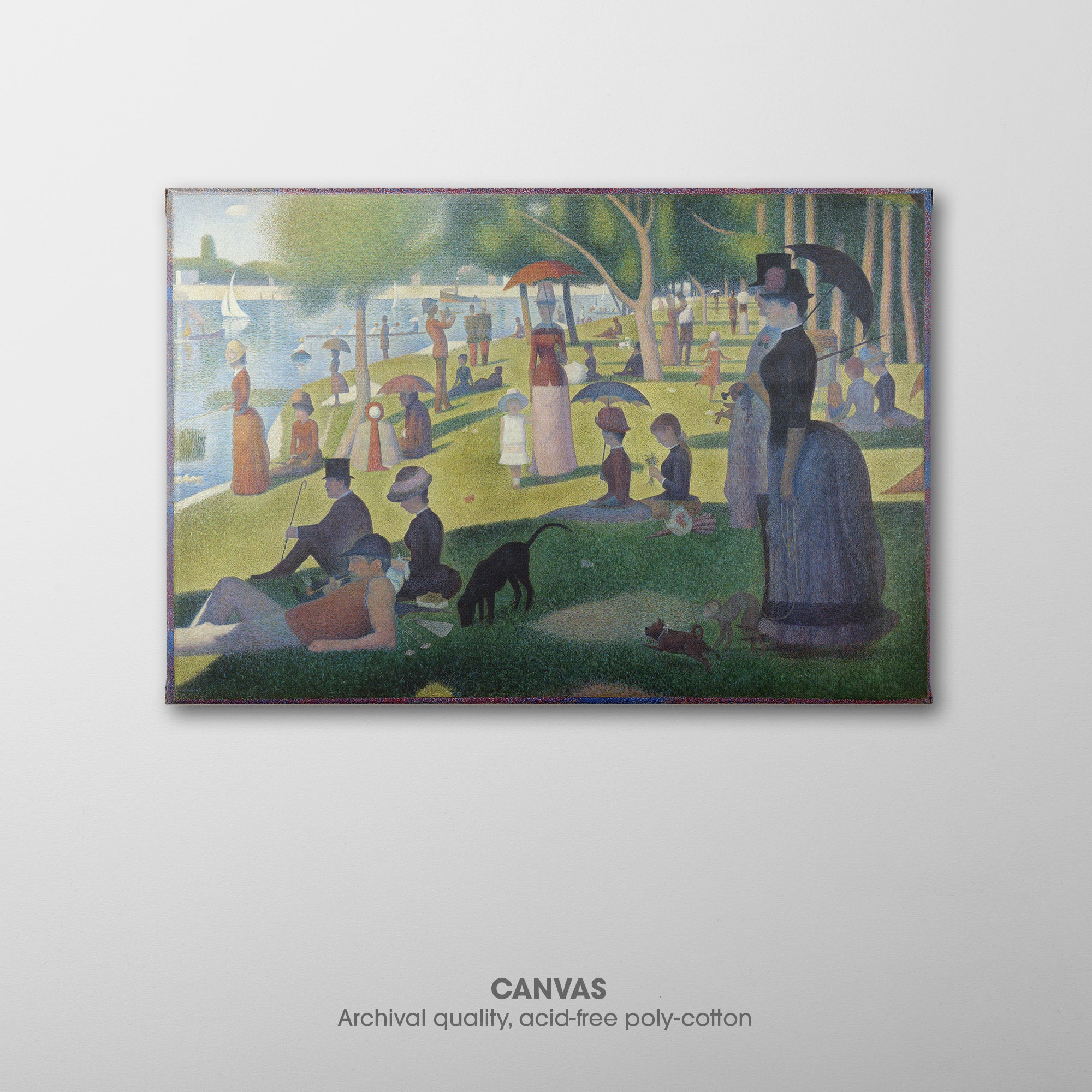
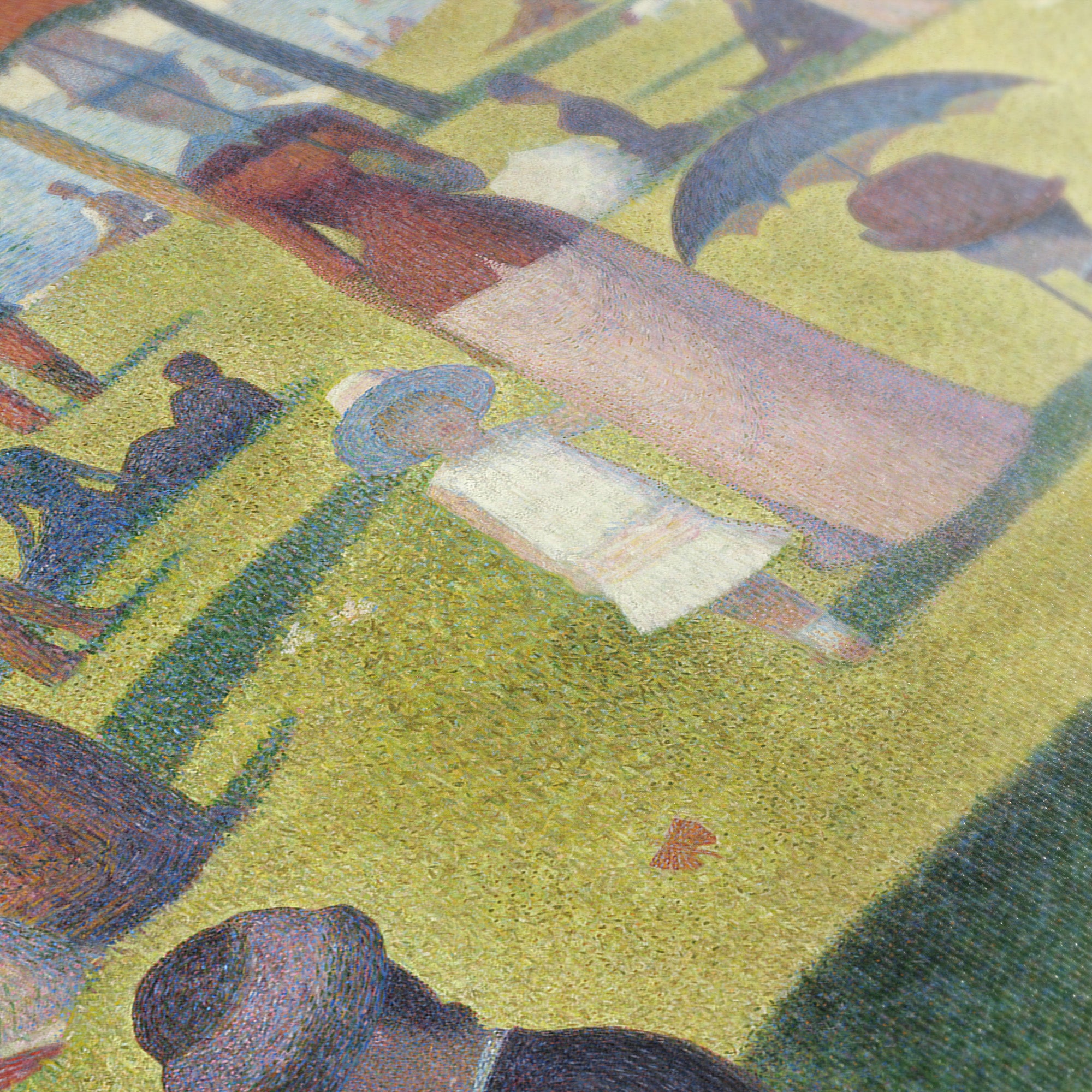 A Sunday Afternoon on the Island of La Grande Jatte (1886) by Georges Seurat is his most famous painting, and a major example of pointillism. The painting depicts Parisians at a park on the banks of the River Seine. Some of the ➵
A Sunday Afternoon on the Island of La Grande Jatte (1886) by Georges Seurat is his most famous painting, and a major example of pointillism. The painting depicts Parisians at a park on the banks of the River Seine. Some of the ➵◰ Canvas Reproductions
⧈ Framed Art Prints ⨳ Blankets -
Sunday Afternoon ☷ Seurat ☵ Woven Art Blanket

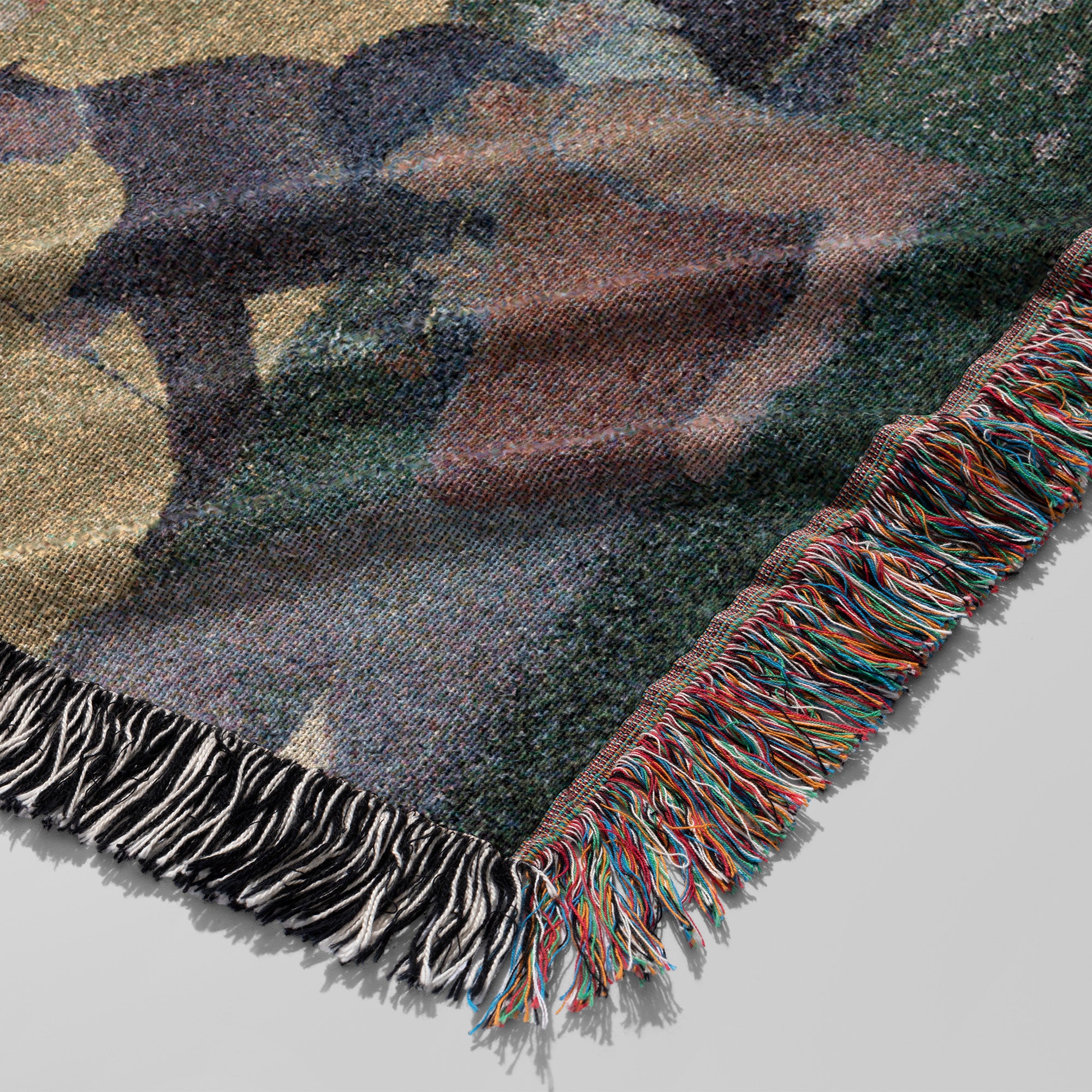 A Sunday Afternoon on the Island of La Grande Jatte (1886) by Georges Seurat is his most famous painting, and a major example of pointillism. The painting depicts Parisians at a park on the banks of the River Seine. Some of the ➵
A Sunday Afternoon on the Island of La Grande Jatte (1886) by Georges Seurat is his most famous painting, and a major example of pointillism. The painting depicts Parisians at a park on the banks of the River Seine. Some of the ➵◰ Canvas Reproductions
⧈ Framed Art Prints ⨳ Blankets -
Sunflowers ☲ Van Gogh ☴ Art Print

 Sunflowers (1889) by Vincent van Gogh is one of a series, which are among his most famous works. He painted a total of five large canvases with sunflowers in a vase, and several repetitions of the same, depicting sunflowers in all stages ➵
Sunflowers (1889) by Vincent van Gogh is one of a series, which are among his most famous works. He painted a total of five large canvases with sunflowers in a vase, and several repetitions of the same, depicting sunflowers in all stages ➵◰ Canvas Reproductions
⧈ Framed Art Prints -
Sunflowers ☲ Van Gogh ☴ Canvas

 Sunflowers (1889) by Vincent van Gogh is one of a series, which are among his most famous works. He painted a total of five large canvases with sunflowers in a vase, and several repetitions of the same, depicting sunflowers in all stages ➵
Sunflowers (1889) by Vincent van Gogh is one of a series, which are among his most famous works. He painted a total of five large canvases with sunflowers in a vase, and several repetitions of the same, depicting sunflowers in all stages ➵◰ Canvas Reproductions
⧈ Framed Art Prints -
Sunset at Douarnenez ☲ Renoir ☵ Art Print
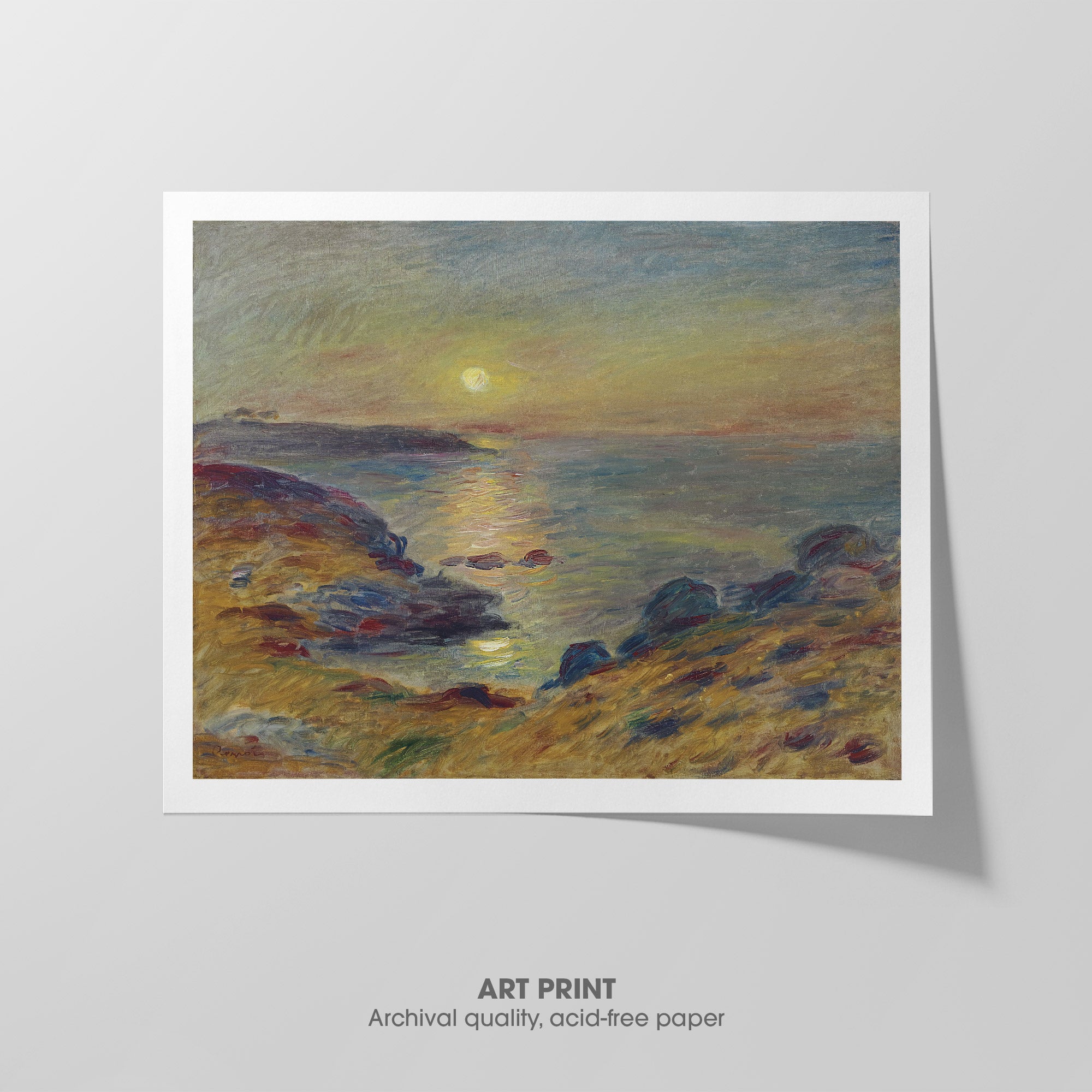
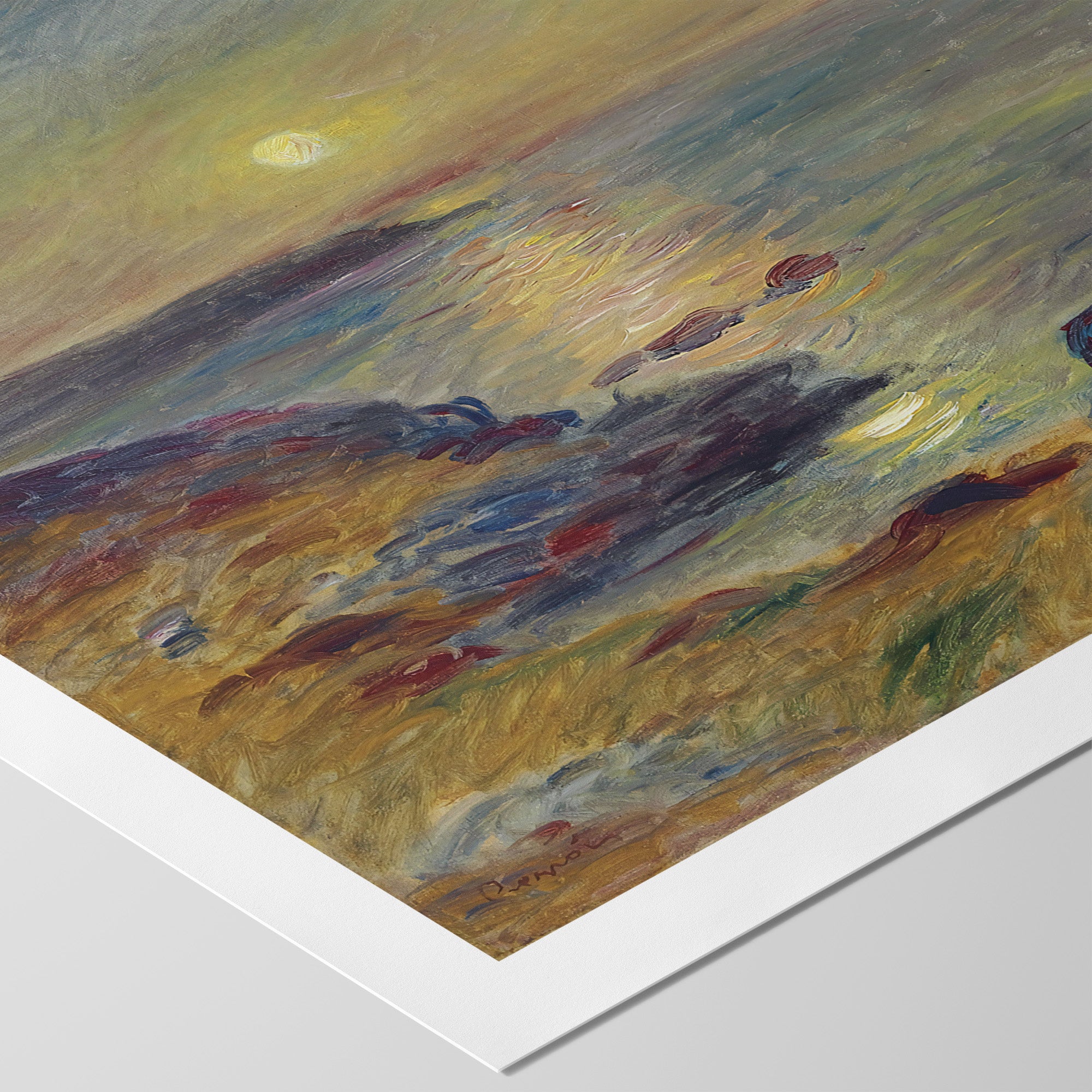 Sunset at Douarnenez (1883, Coucher de soleil à Douarnenez) by Pierre-Auguste Renoir depicts the setting sun off the Breton coast in France. Reminiscent of Monet's Impression, Sunrise, Renoir displays a strong impressionistic influence, capturing a scene of the natural world in a ➵
Sunset at Douarnenez (1883, Coucher de soleil à Douarnenez) by Pierre-Auguste Renoir depicts the setting sun off the Breton coast in France. Reminiscent of Monet's Impression, Sunrise, Renoir displays a strong impressionistic influence, capturing a scene of the natural world in a ➵◰ Canvas Reproductions
⧈ Framed Art Prints -
Sunset at Douarnenez ☲ Renoir ☵ Canvas
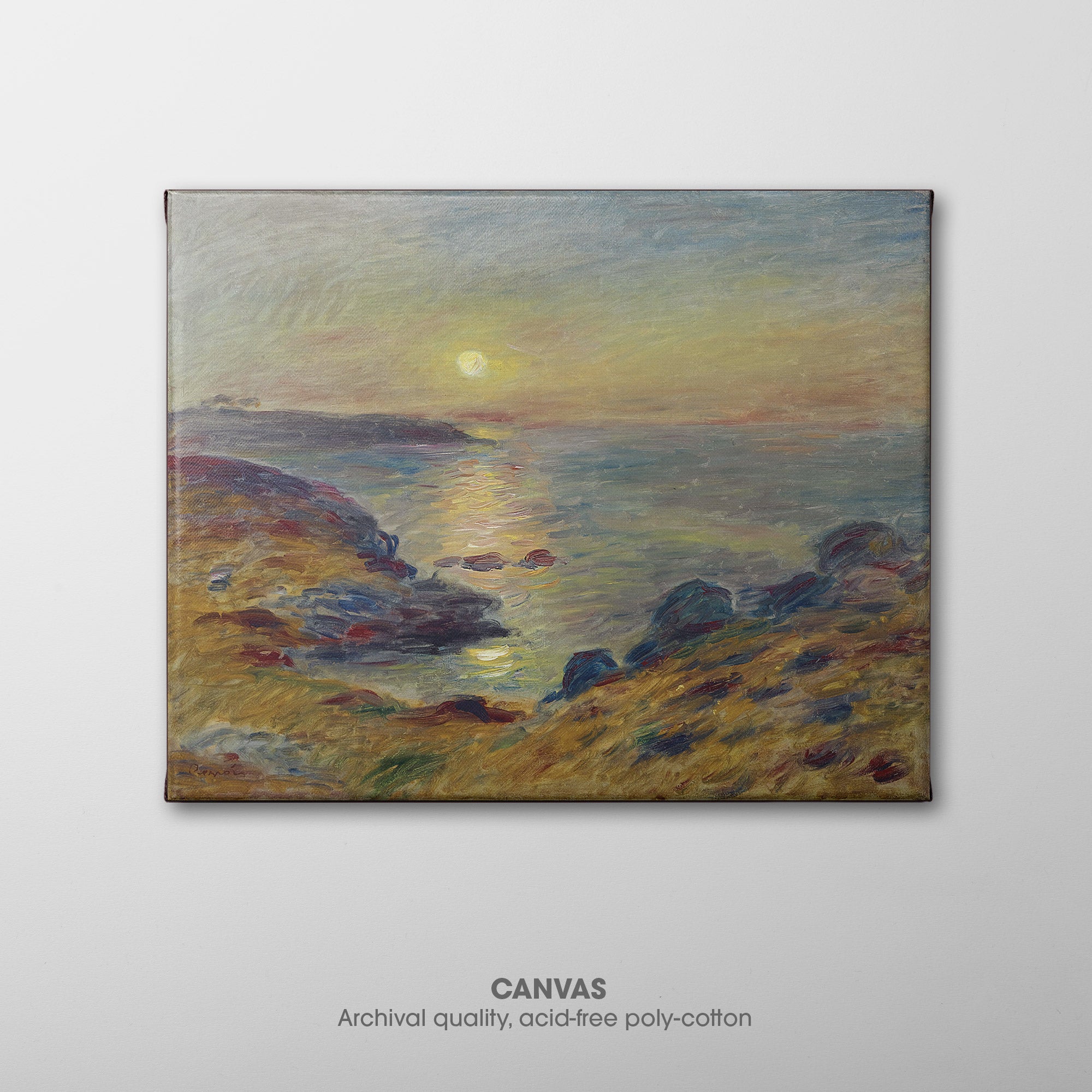
 Sunset at Douarnenez (1883, Coucher de soleil à Douarnenez) by Pierre-Auguste Renoir depicts the setting sun off the Breton coast in France. Reminiscent of Monet's Impression, Sunrise, Renoir displays a strong impressionistic influence, capturing a scene of the natural world in a ➵
Sunset at Douarnenez (1883, Coucher de soleil à Douarnenez) by Pierre-Auguste Renoir depicts the setting sun off the Breton coast in France. Reminiscent of Monet's Impression, Sunrise, Renoir displays a strong impressionistic influence, capturing a scene of the natural world in a ➵◰ Canvas Reproductions
⧈ Framed Art Prints -
Symphony in White No. 1 ☴ Whistler ☲ Art Print
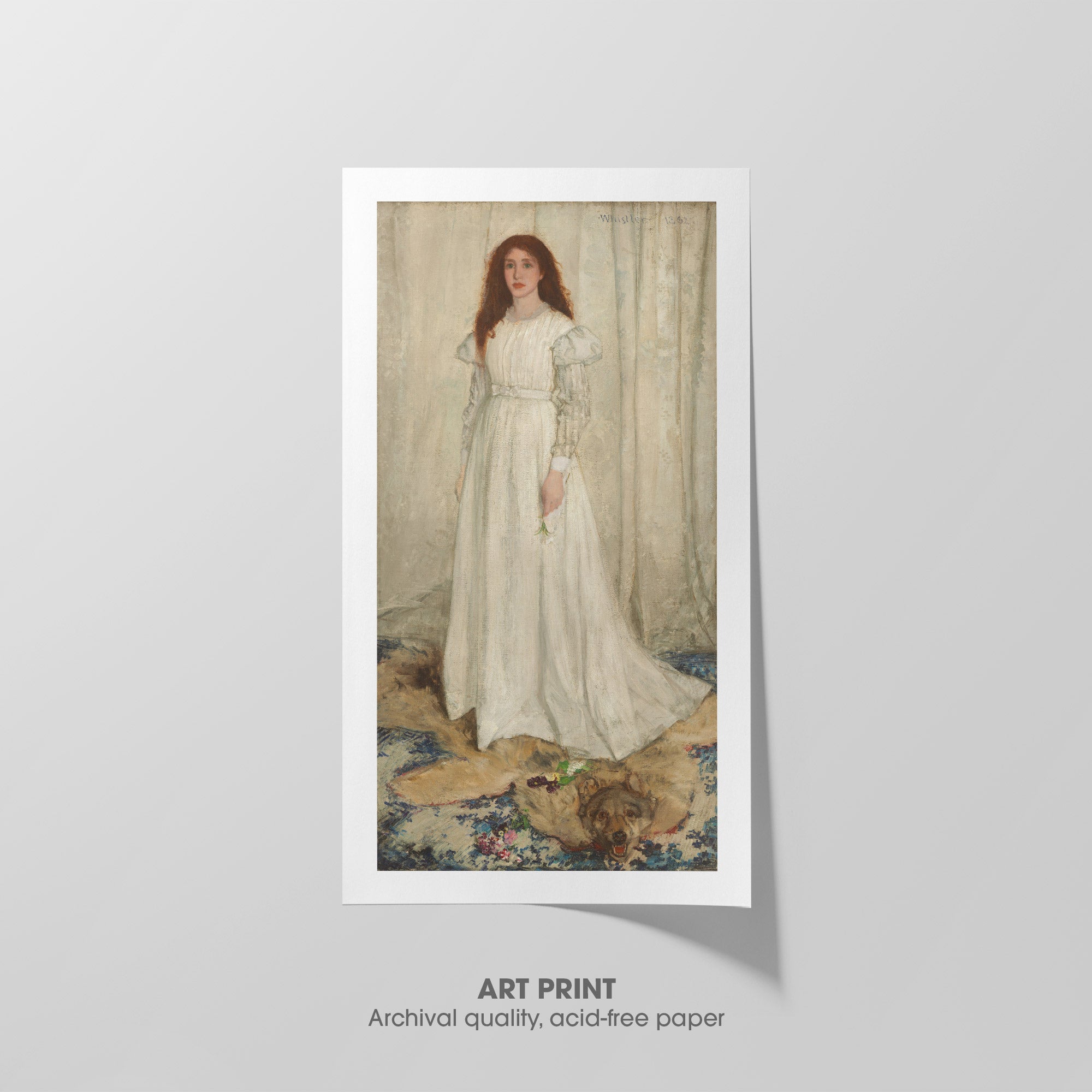
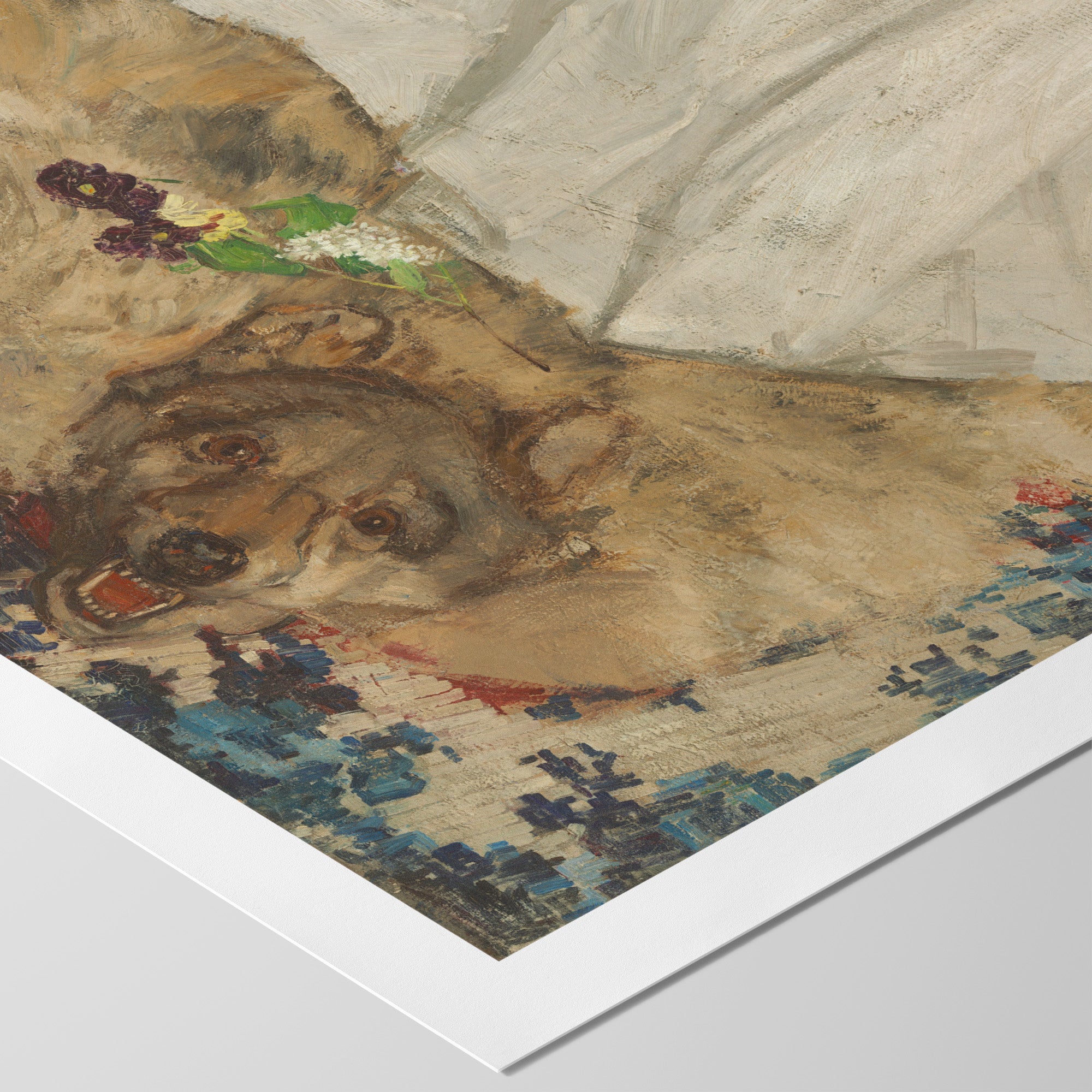 Symphony in White No. 1 (1862) by James McNeill Whistler, was originally called The White Girl. Whistler later called it Symphony in White, No. 1 to emphasize his "art for art's sake" philosophy. The painting was created as a simple study in ➵
Symphony in White No. 1 (1862) by James McNeill Whistler, was originally called The White Girl. Whistler later called it Symphony in White, No. 1 to emphasize his "art for art's sake" philosophy. The painting was created as a simple study in ➵◰ Canvas Reproductions
⧈ Framed Art Prints -
Symphony in White No. 1 ☴ Whistler ☲ Canvas

 Symphony in White No. 1 (1862) by James McNeill Whistler, was originally called The White Girl. Whistler later called it Symphony in White, No. 1 to emphasize his "art for art's sake" philosophy. The painting was created as a simple study in ➵
Symphony in White No. 1 (1862) by James McNeill Whistler, was originally called The White Girl. Whistler later called it Symphony in White, No. 1 to emphasize his "art for art's sake" philosophy. The painting was created as a simple study in ➵◰ Canvas Reproductions
⧈ Framed Art Prints


